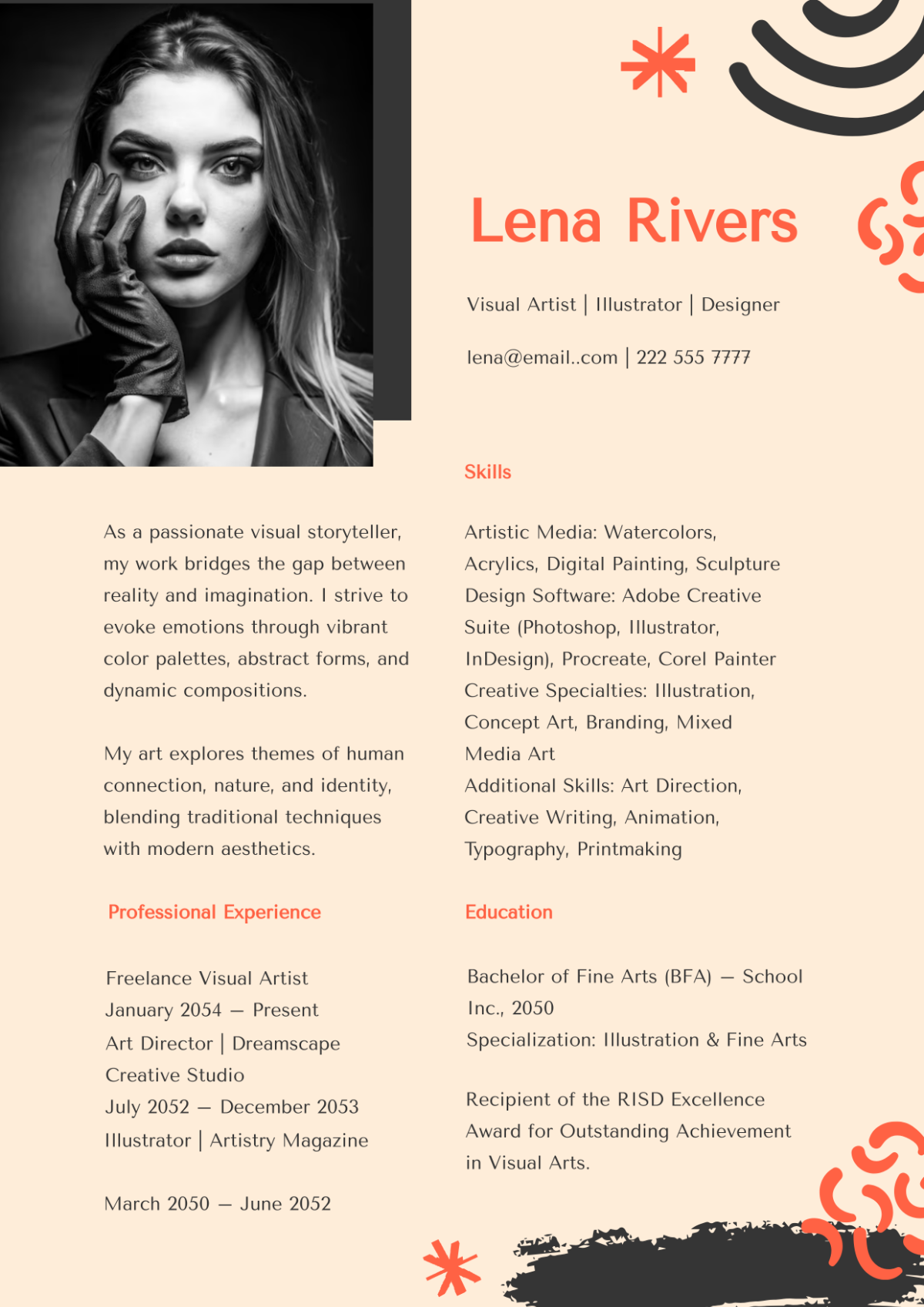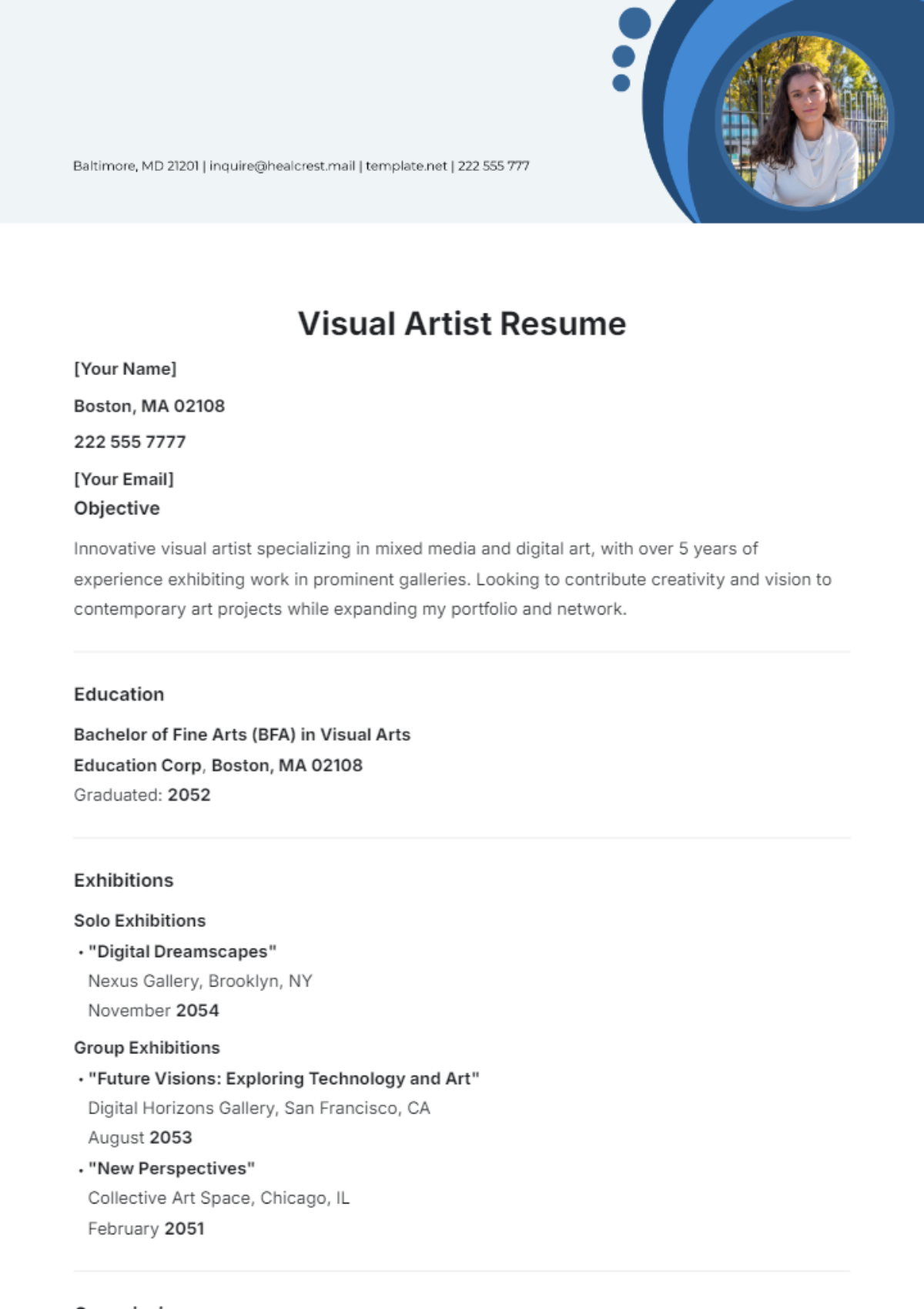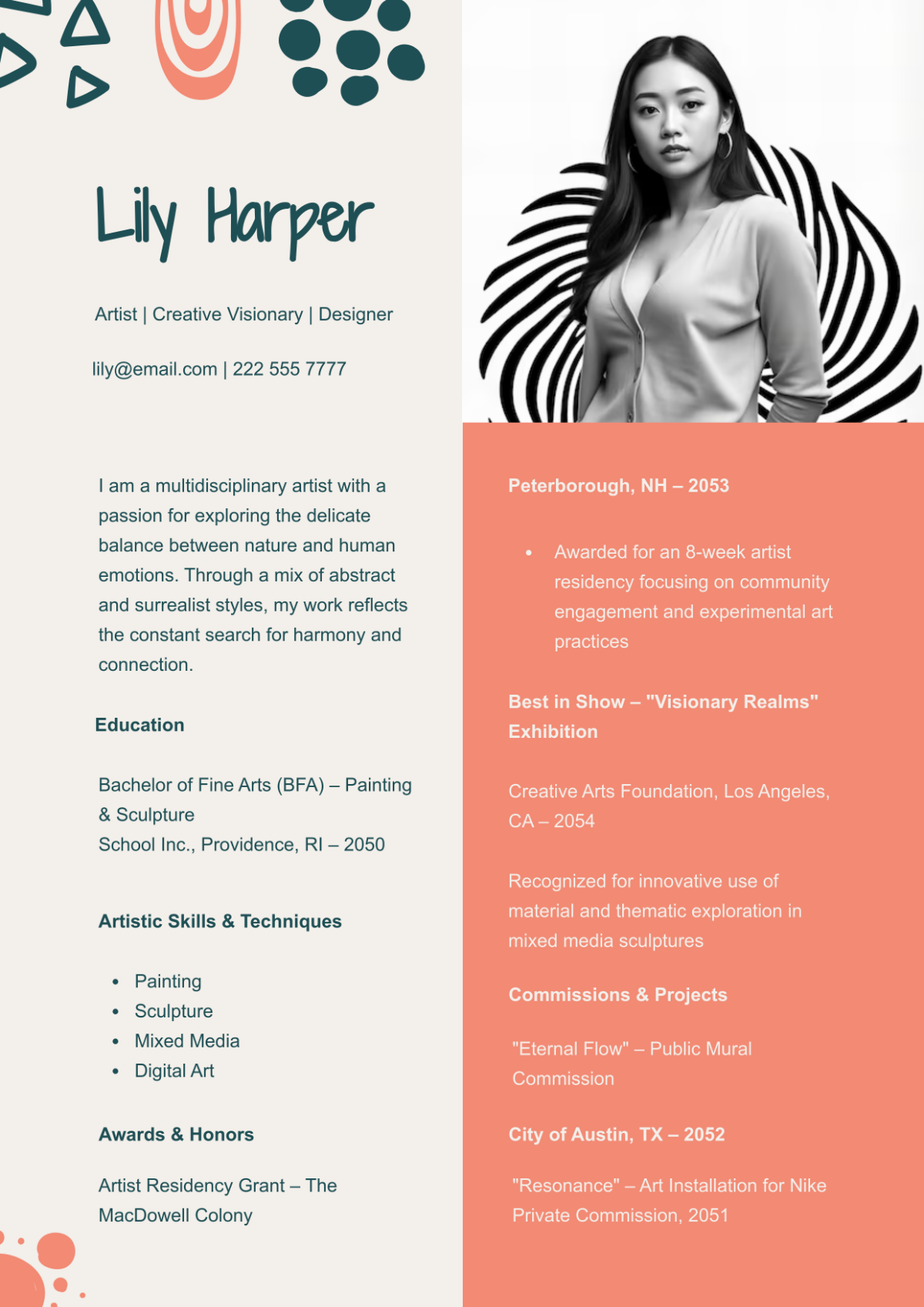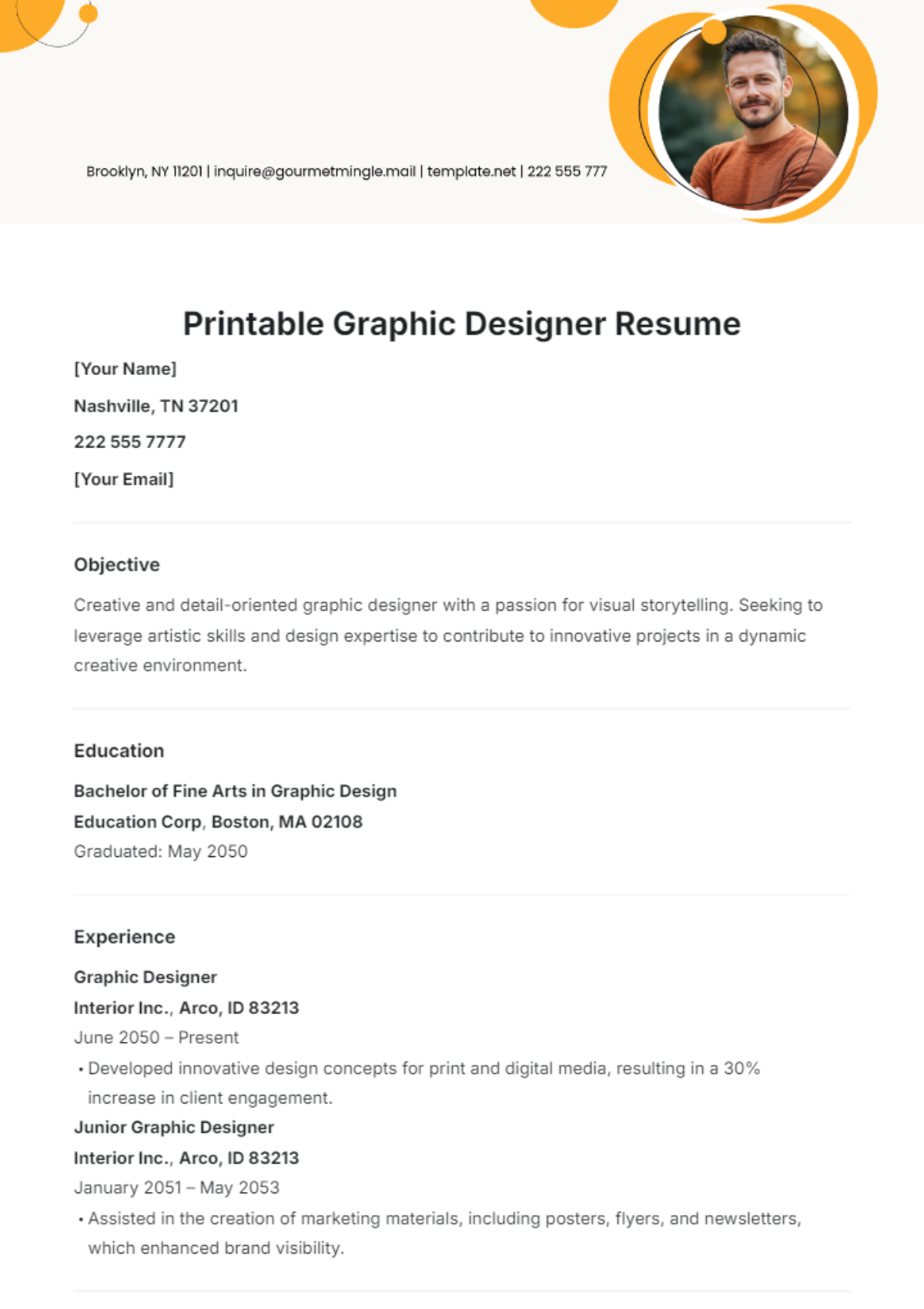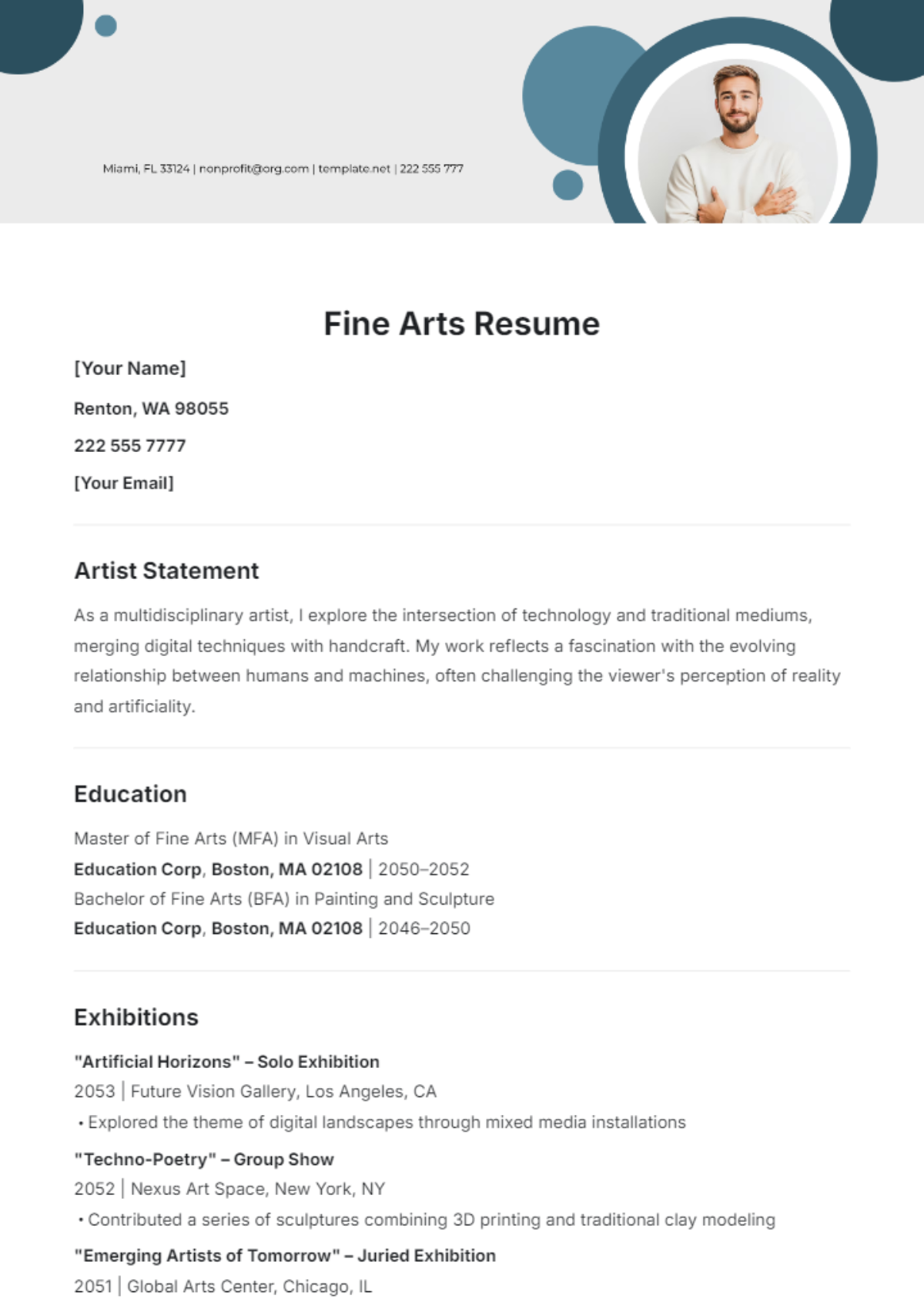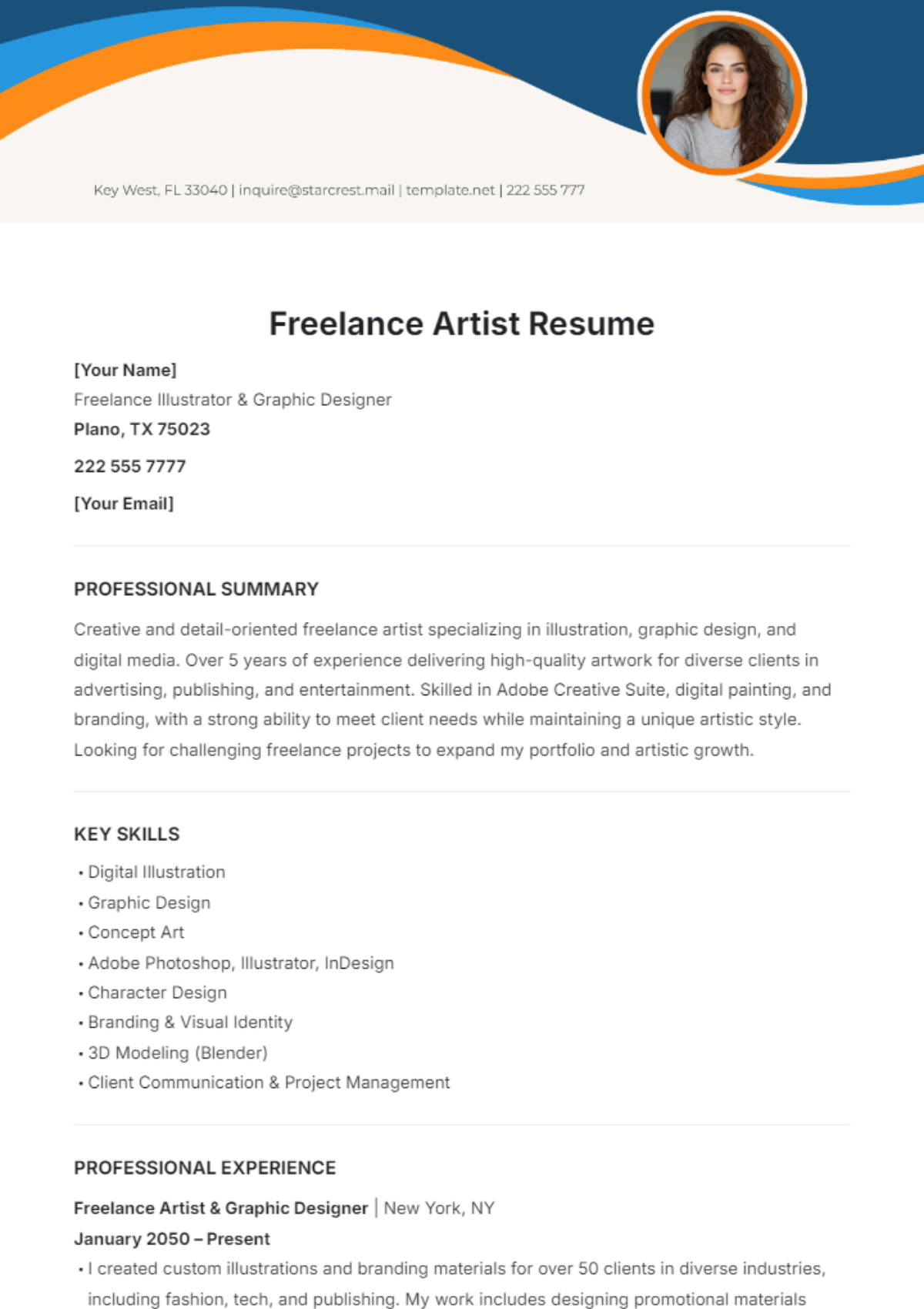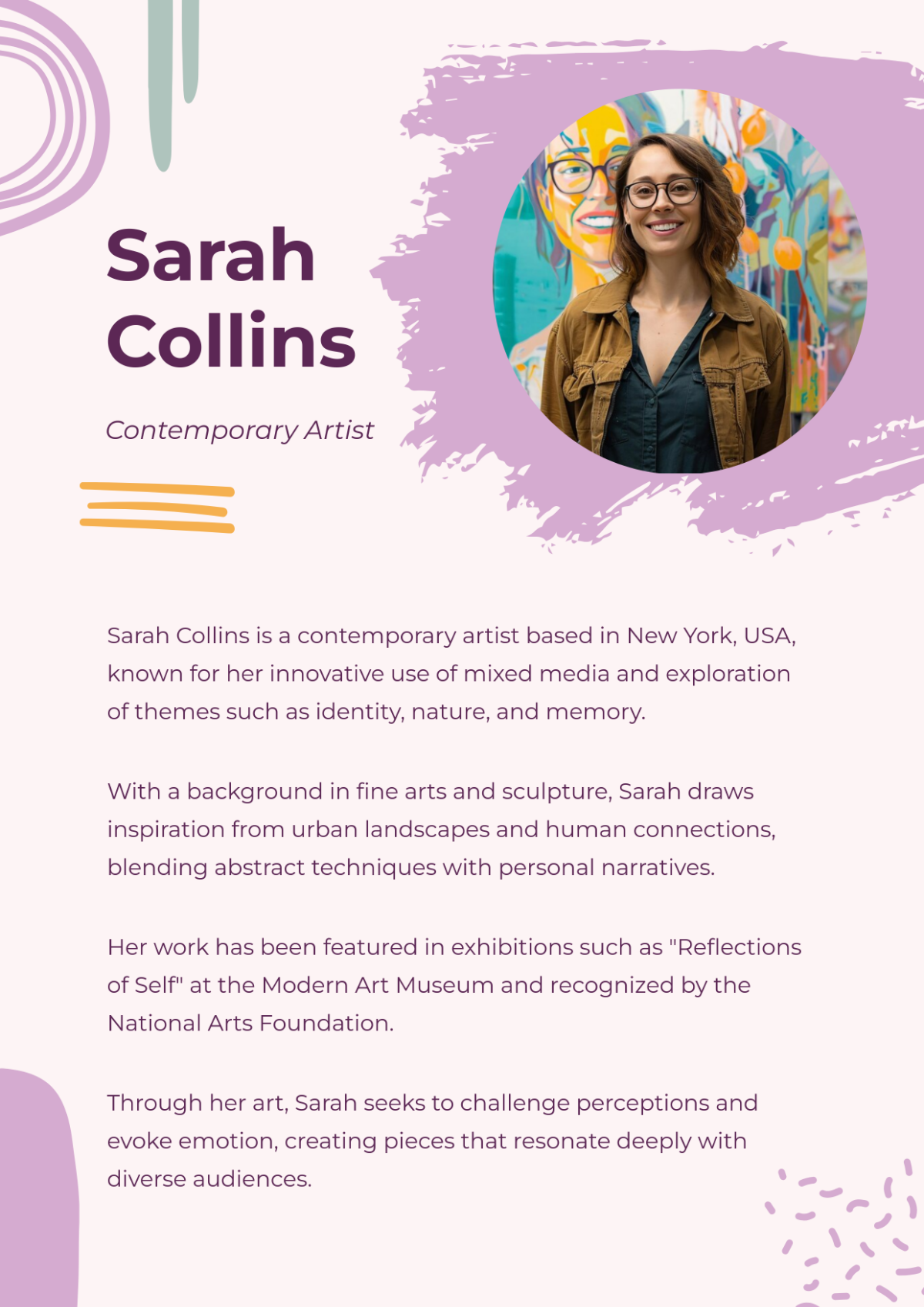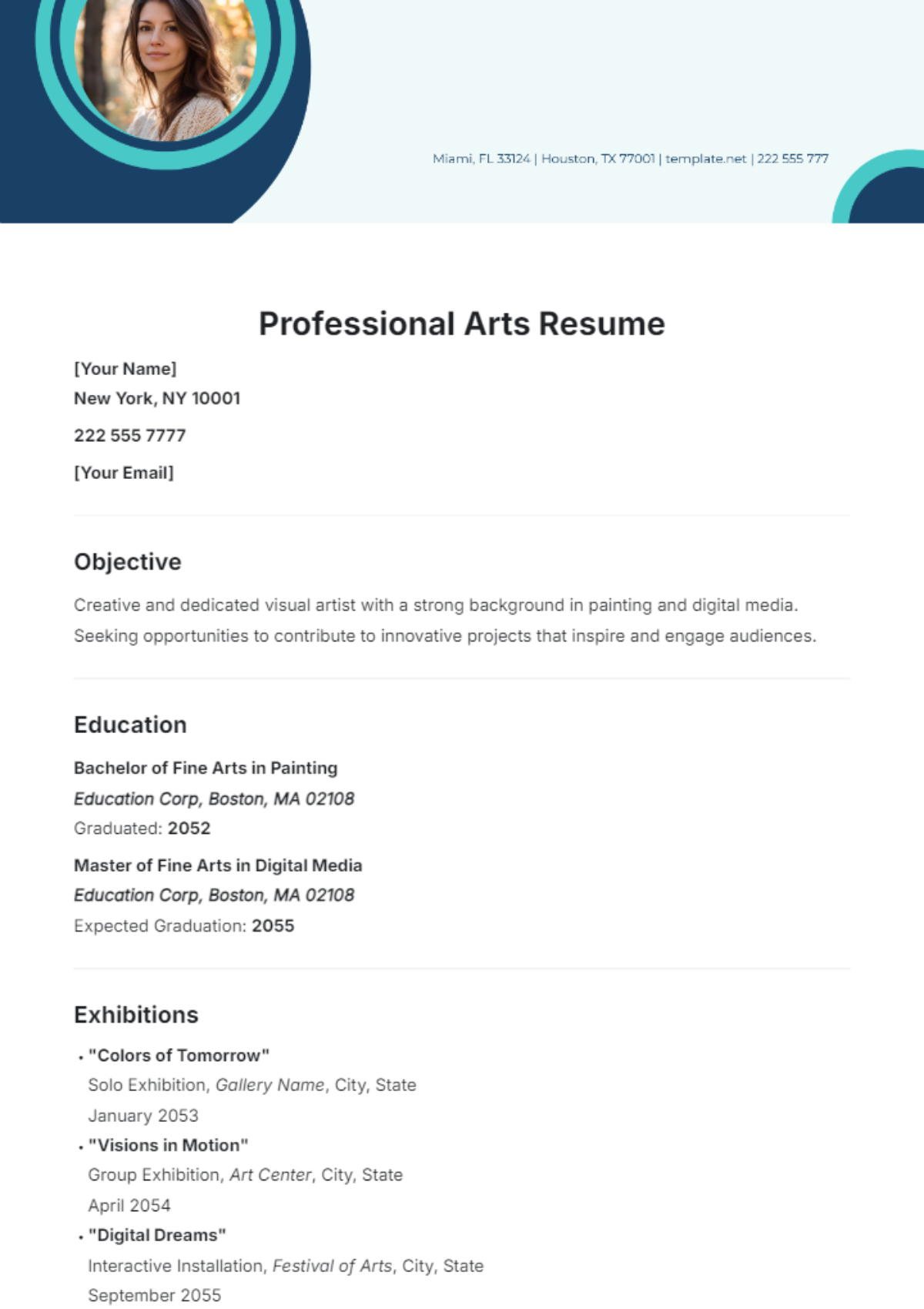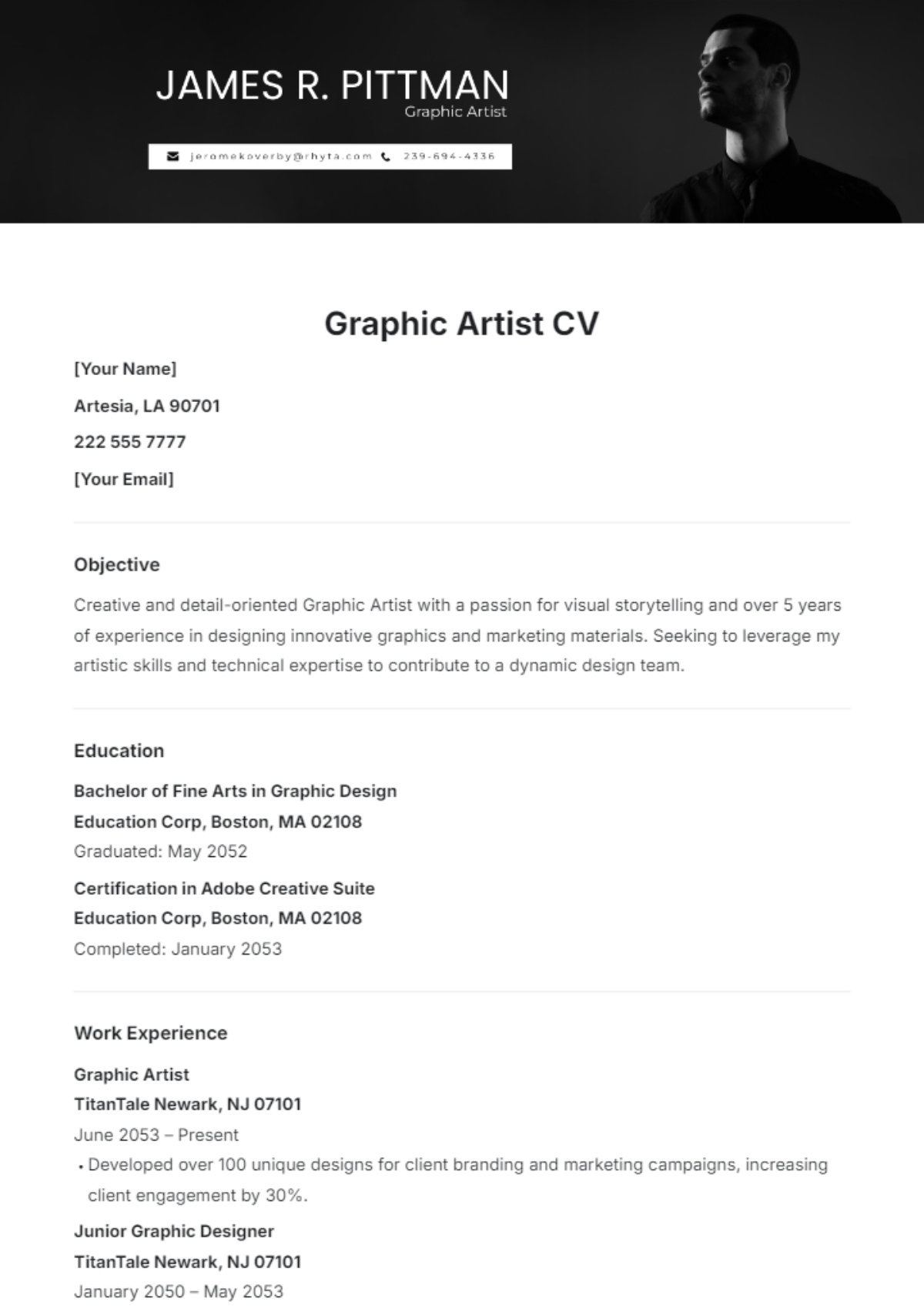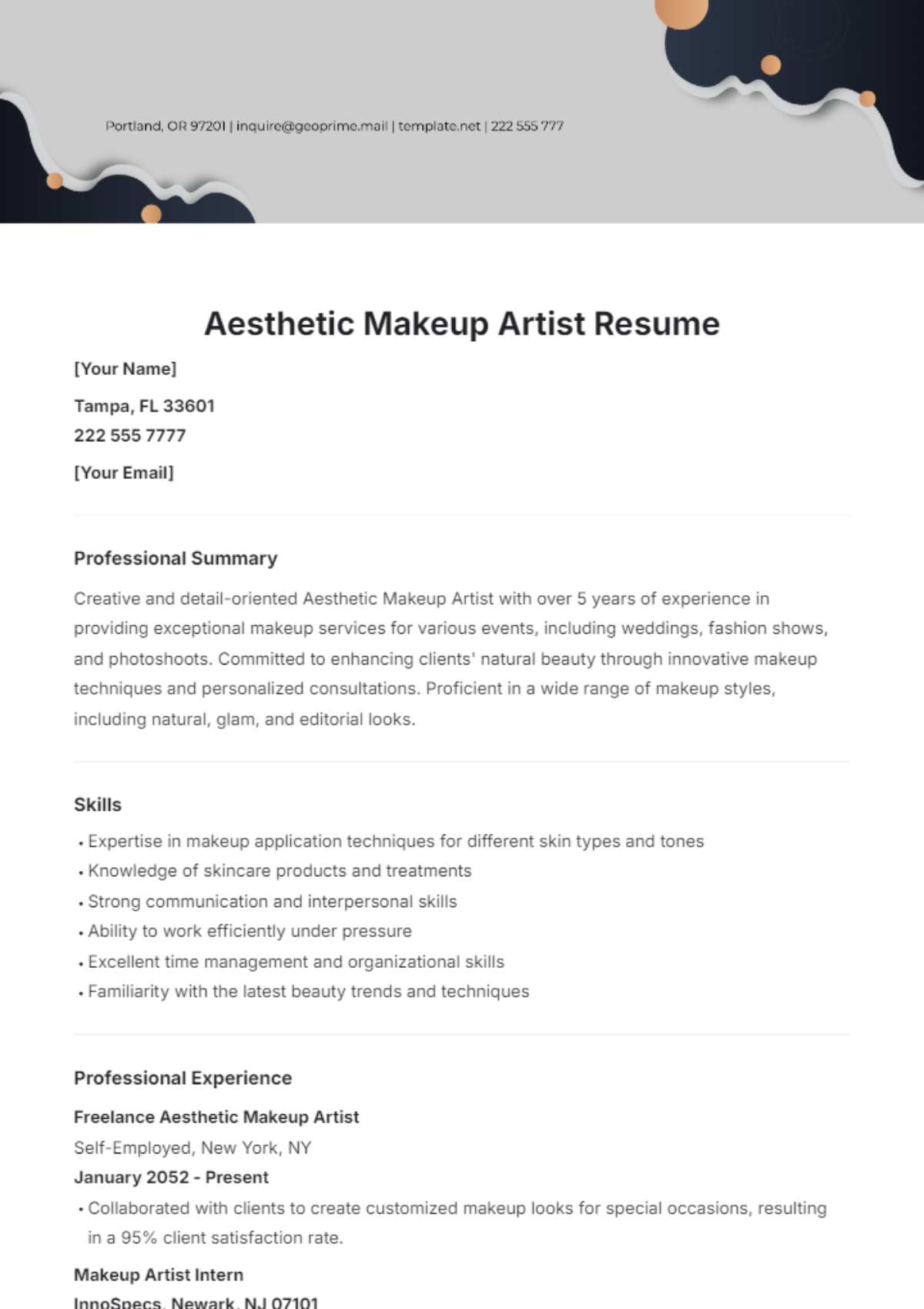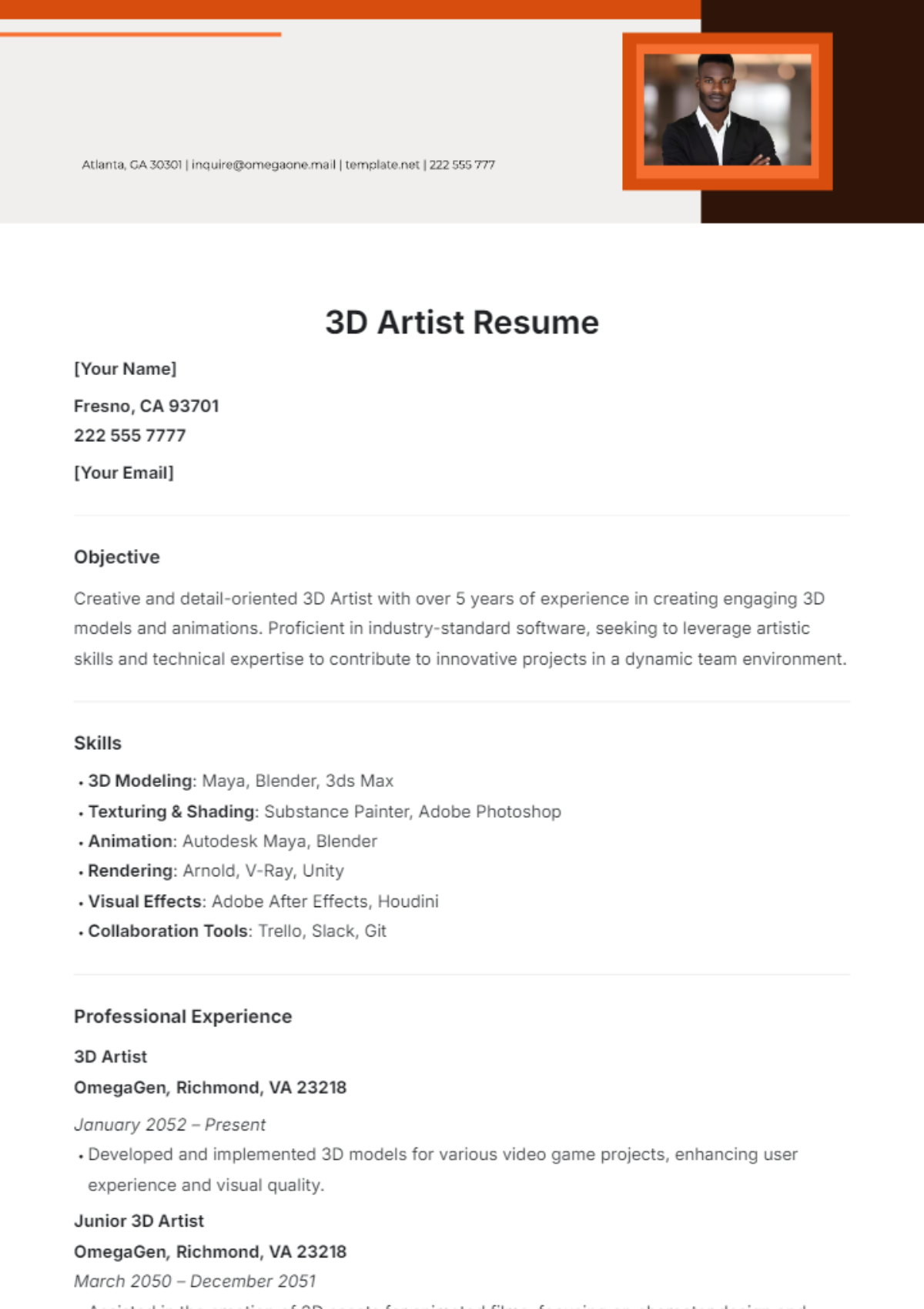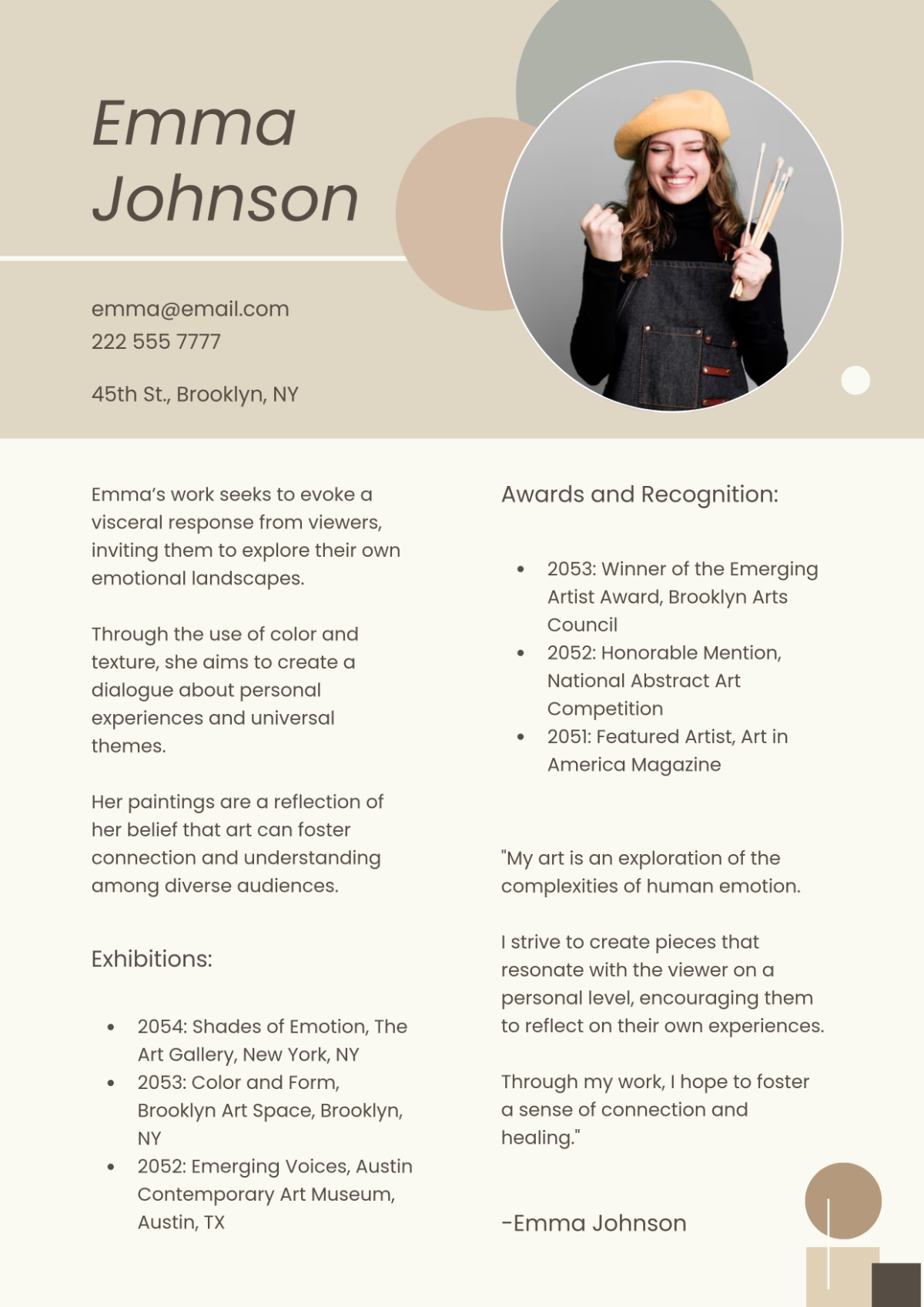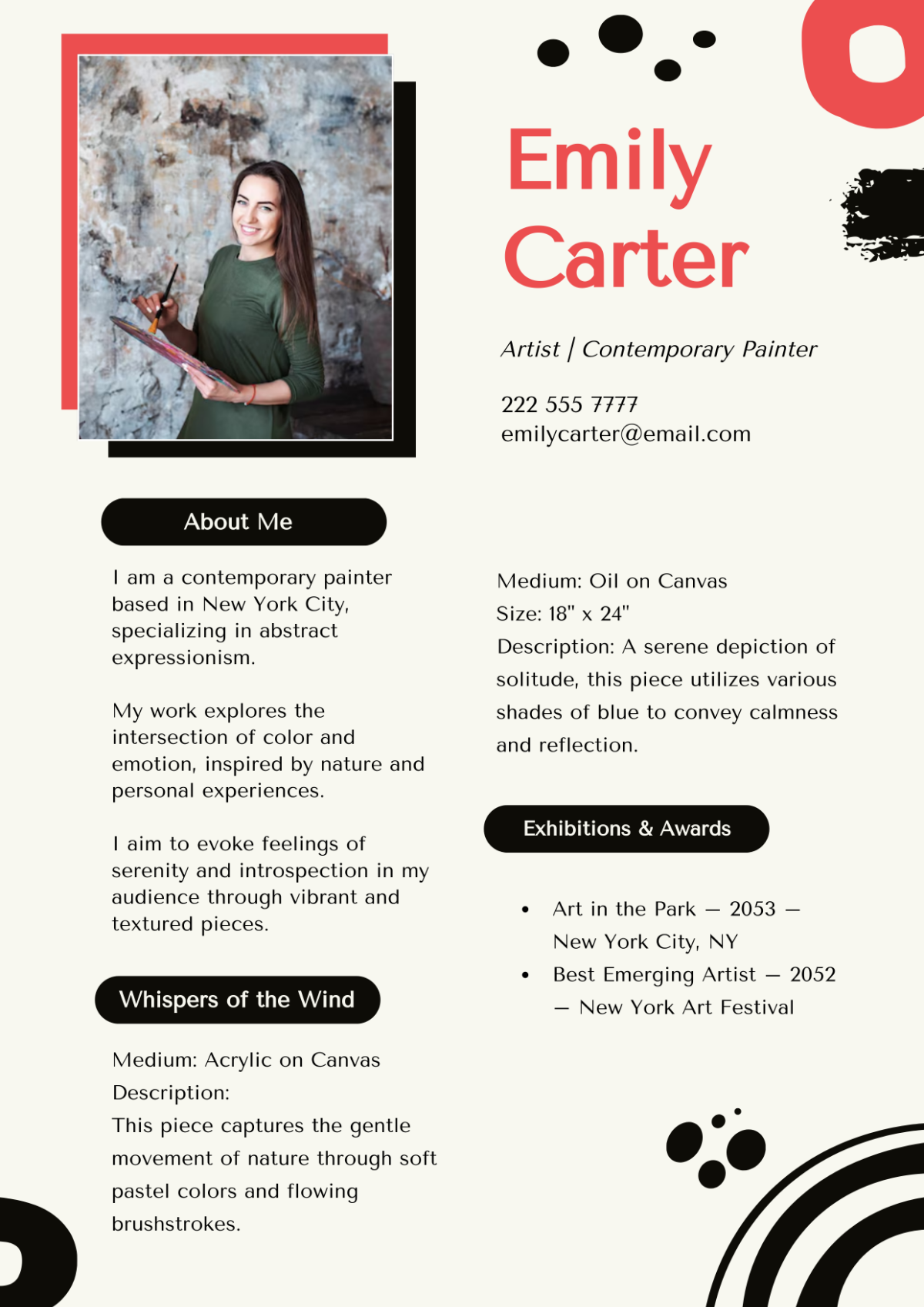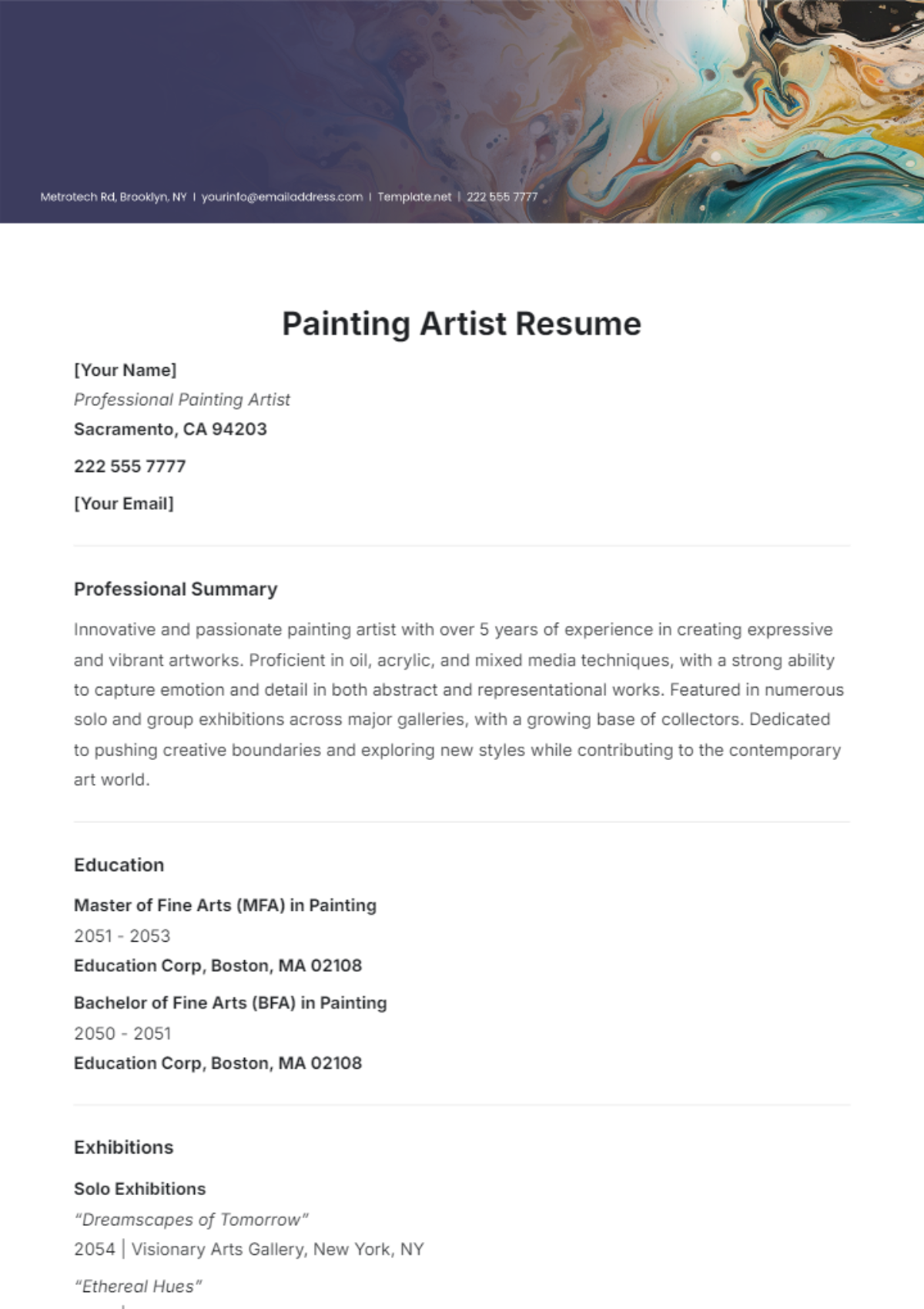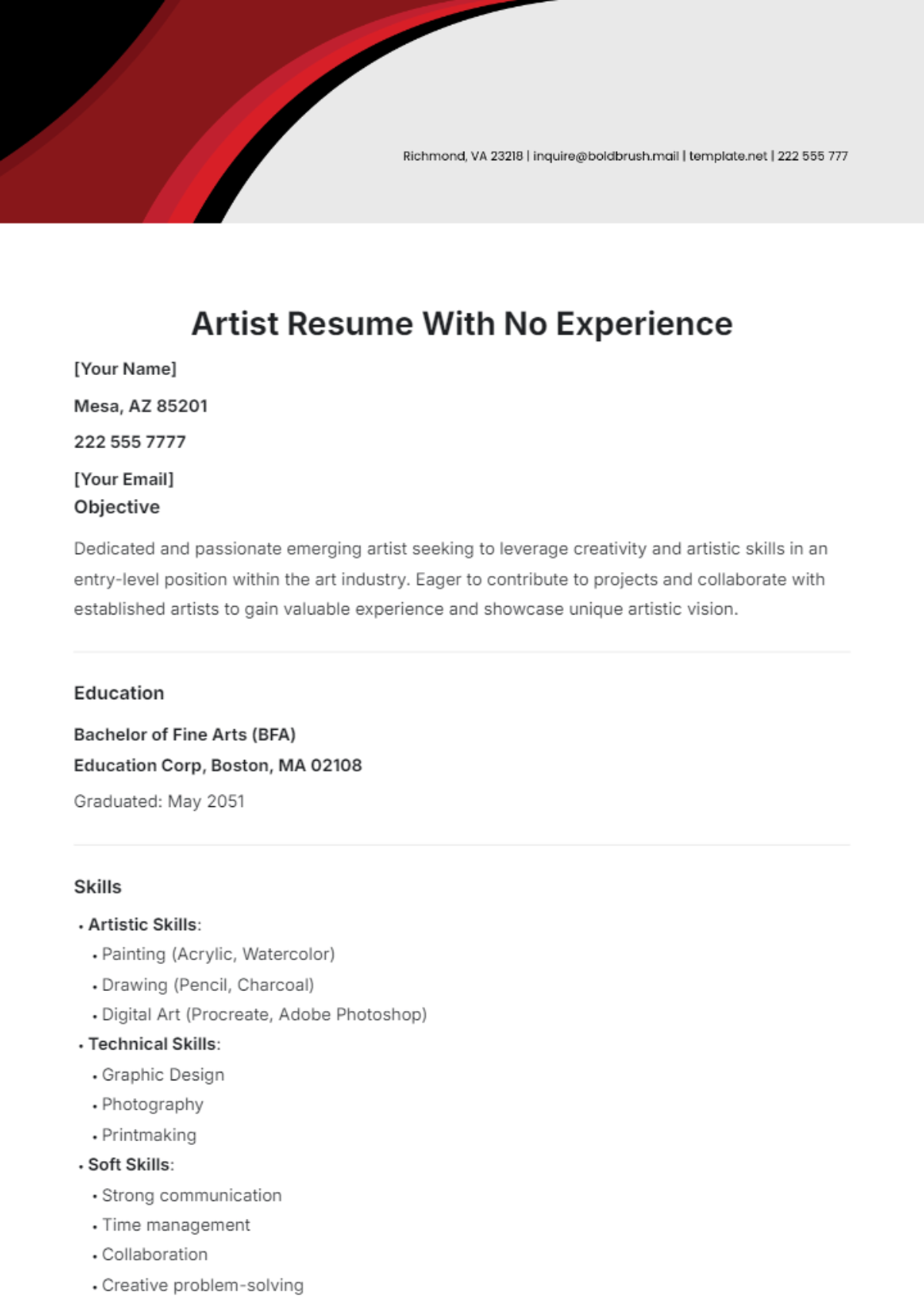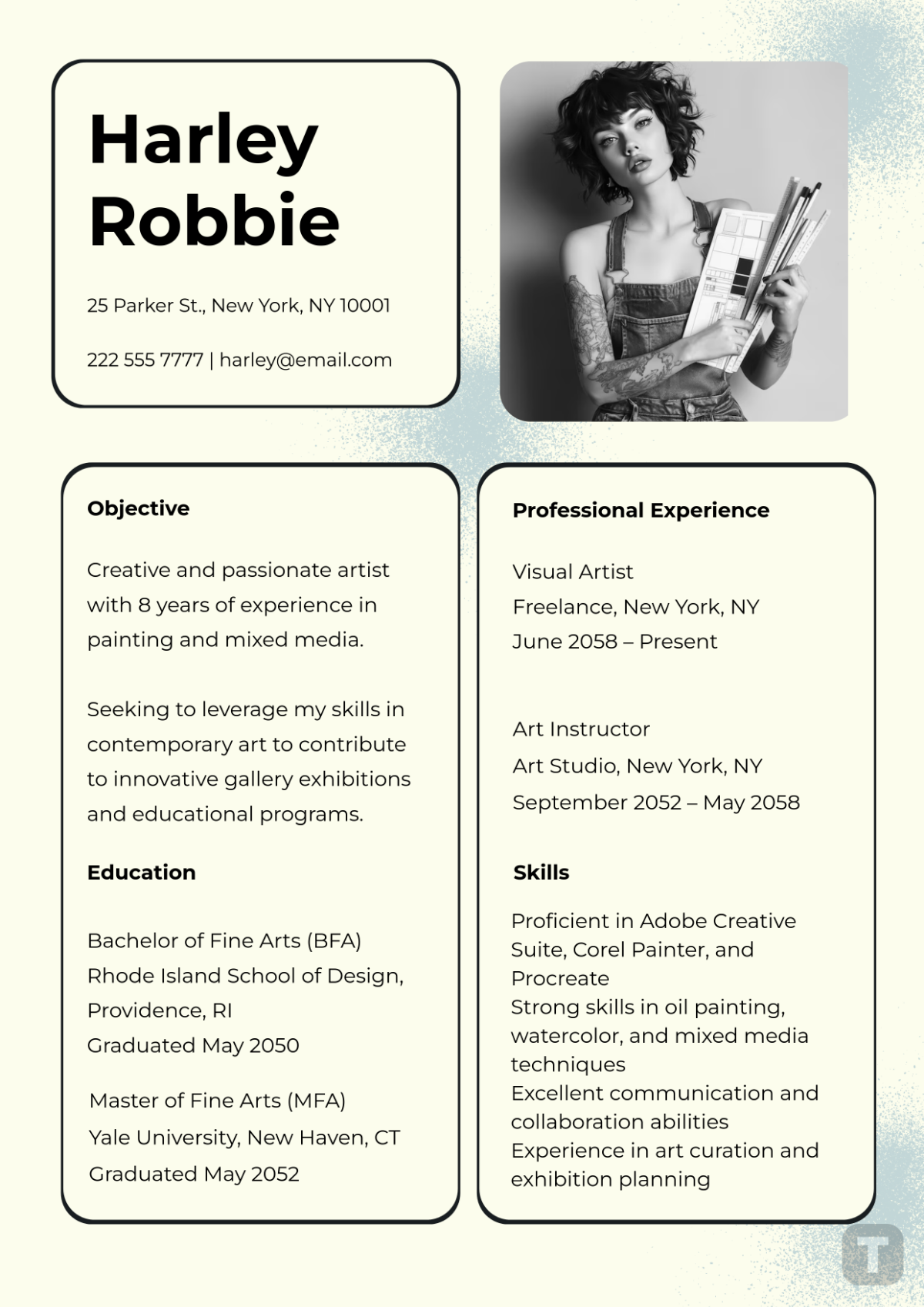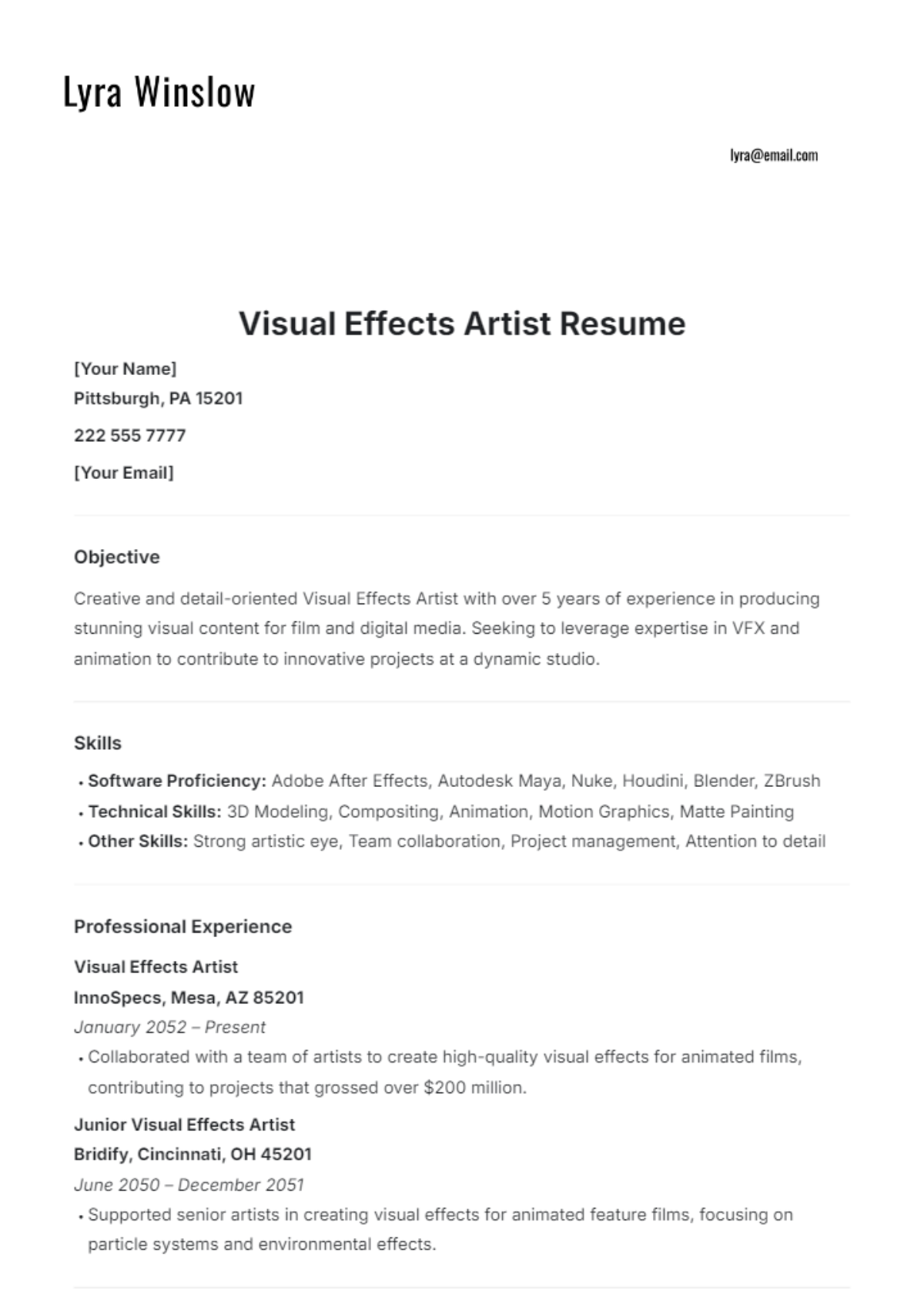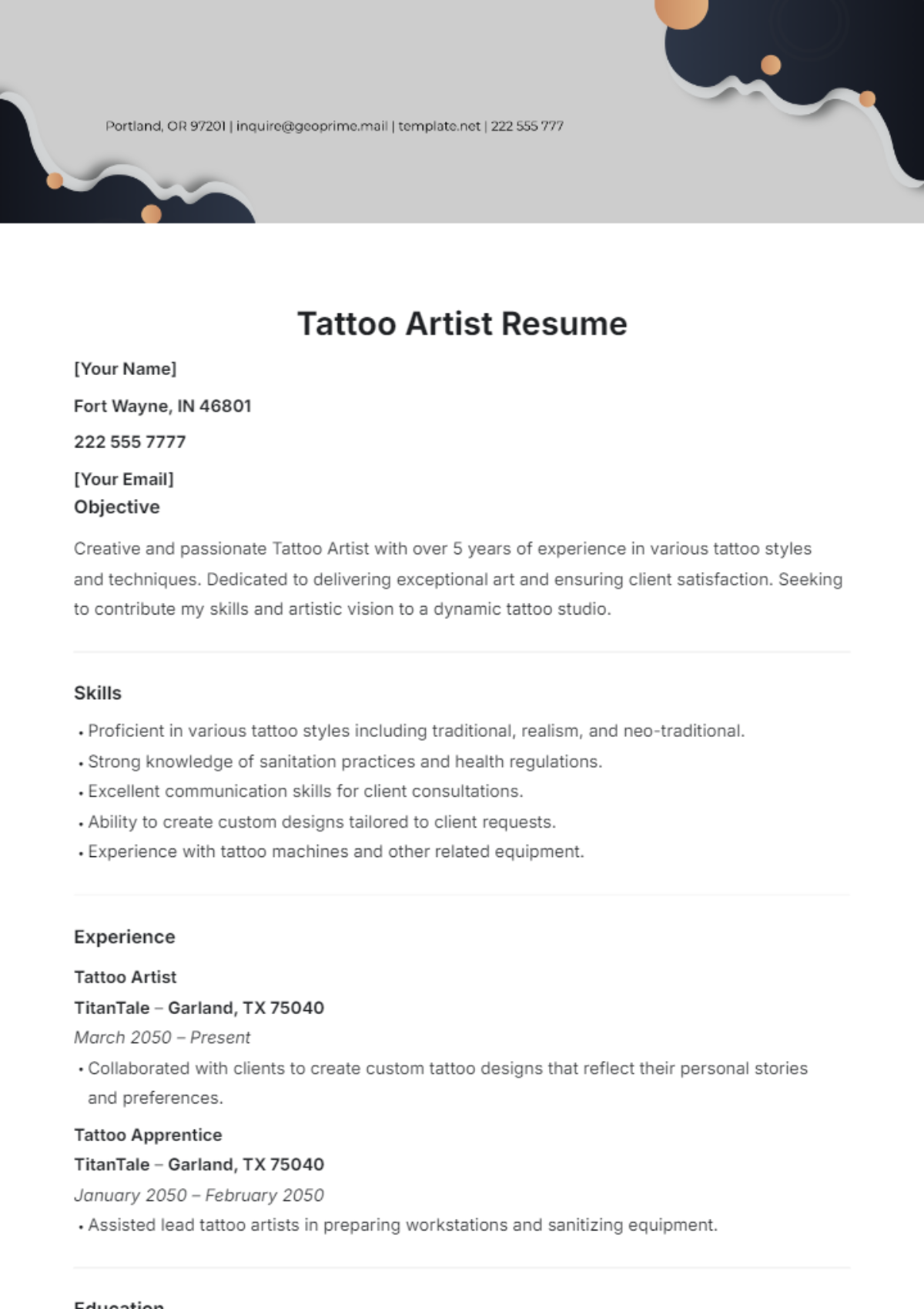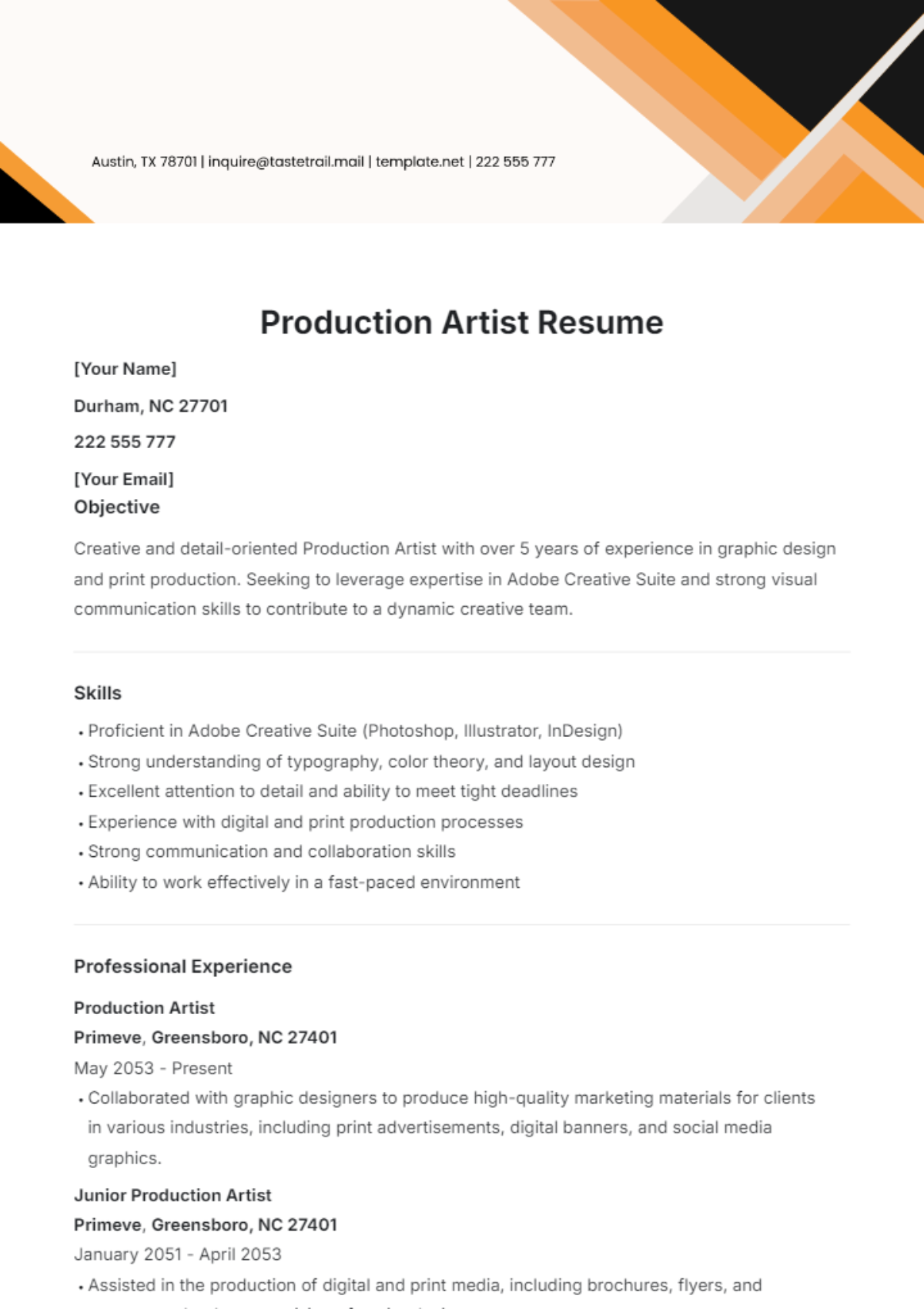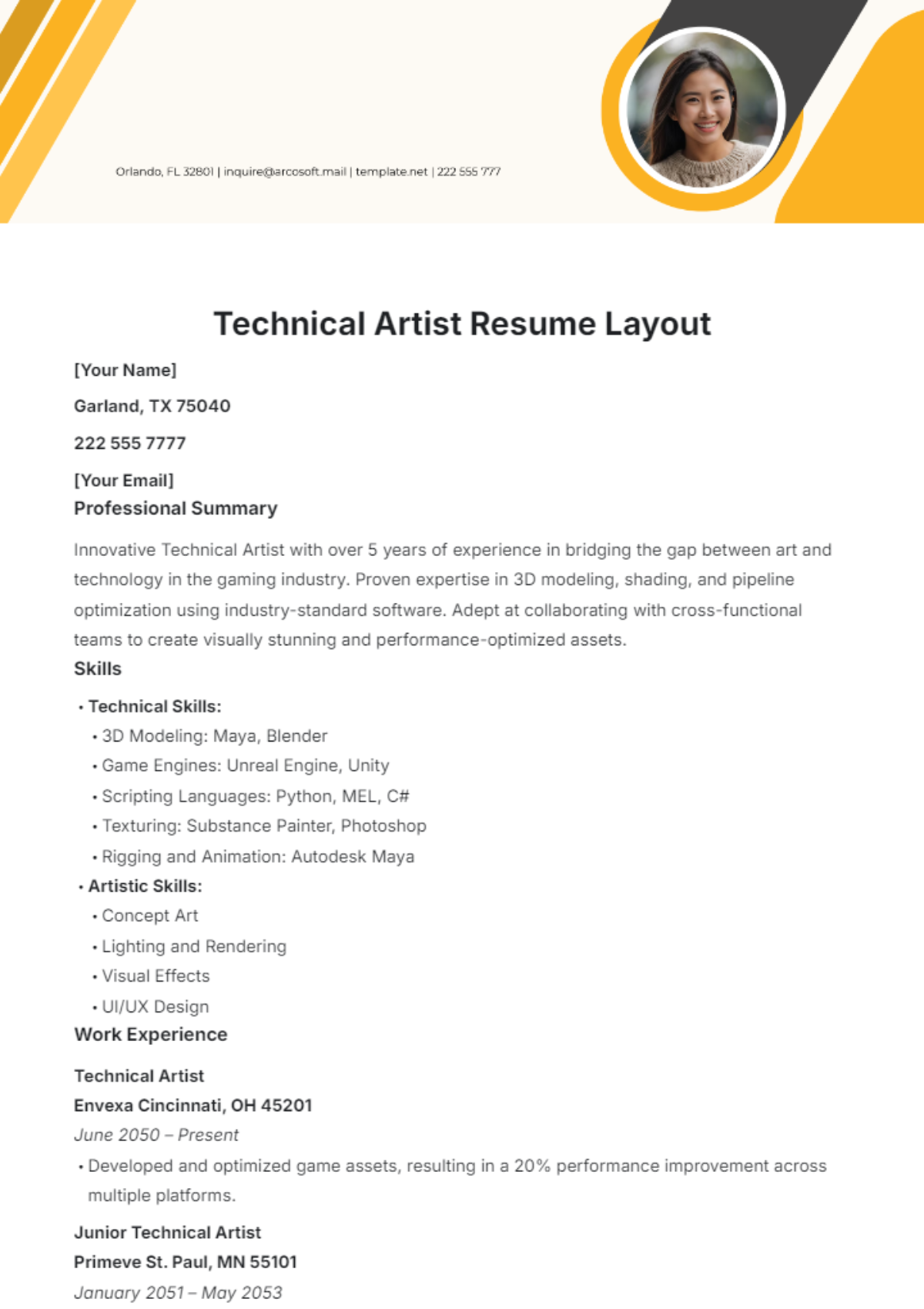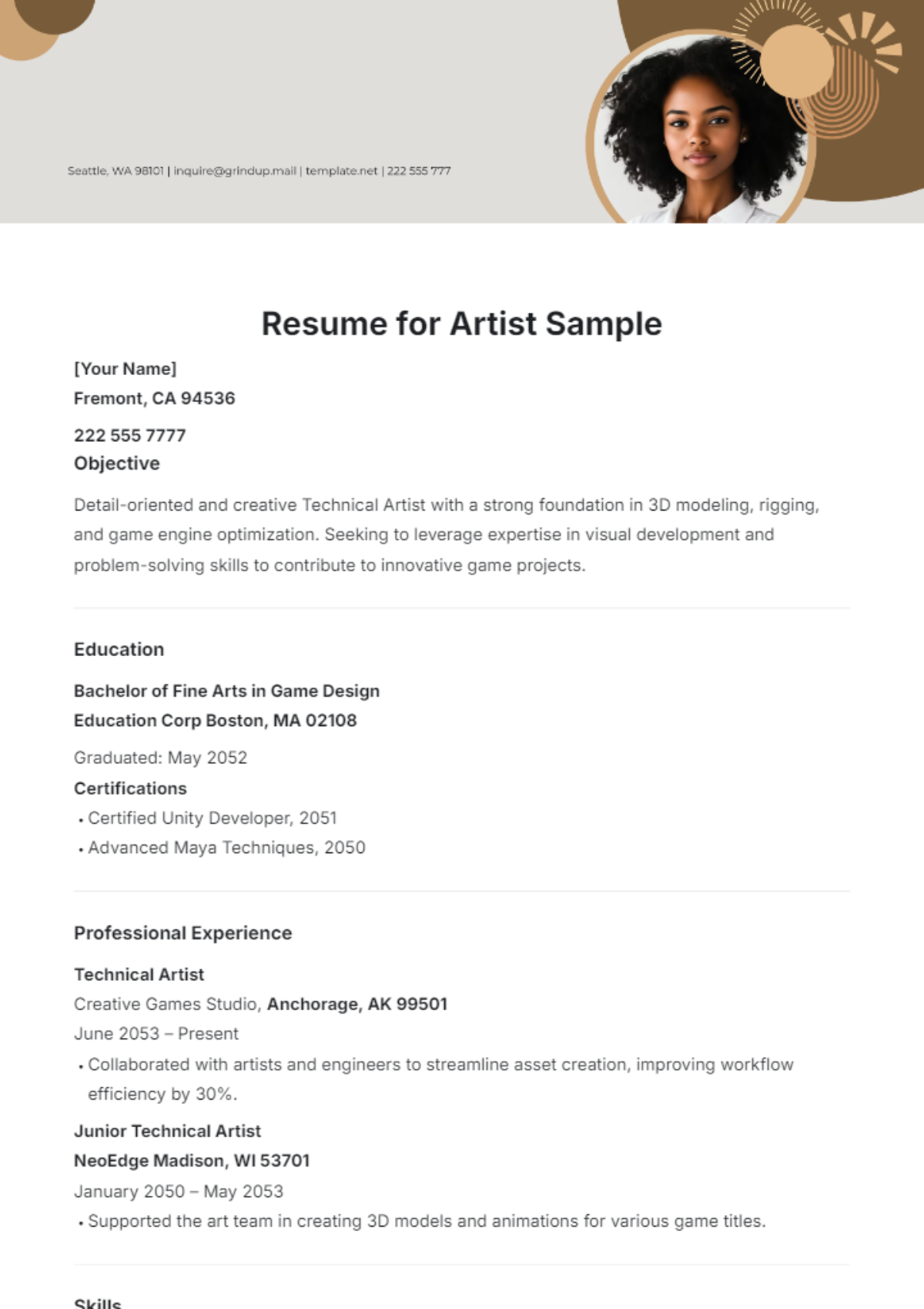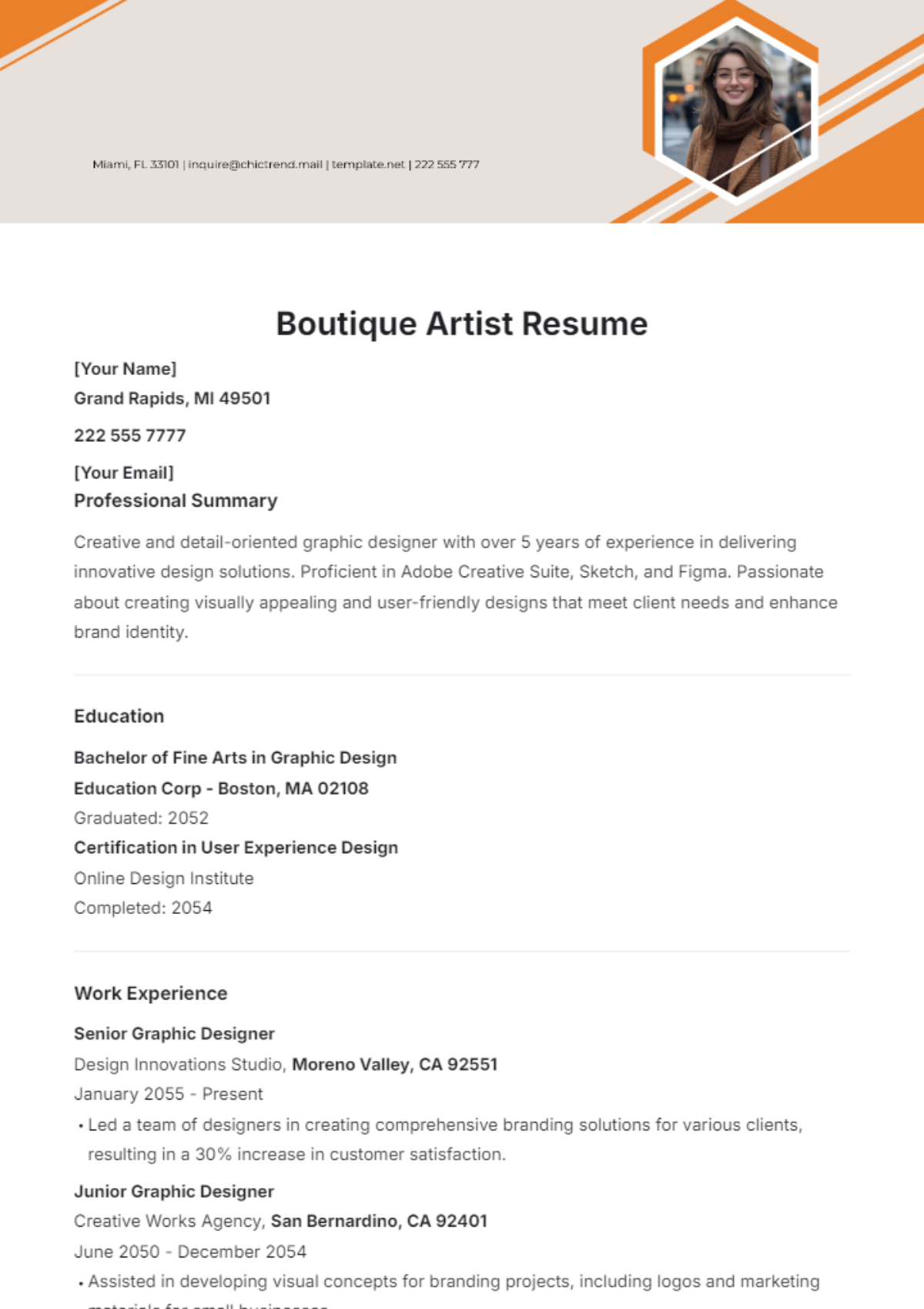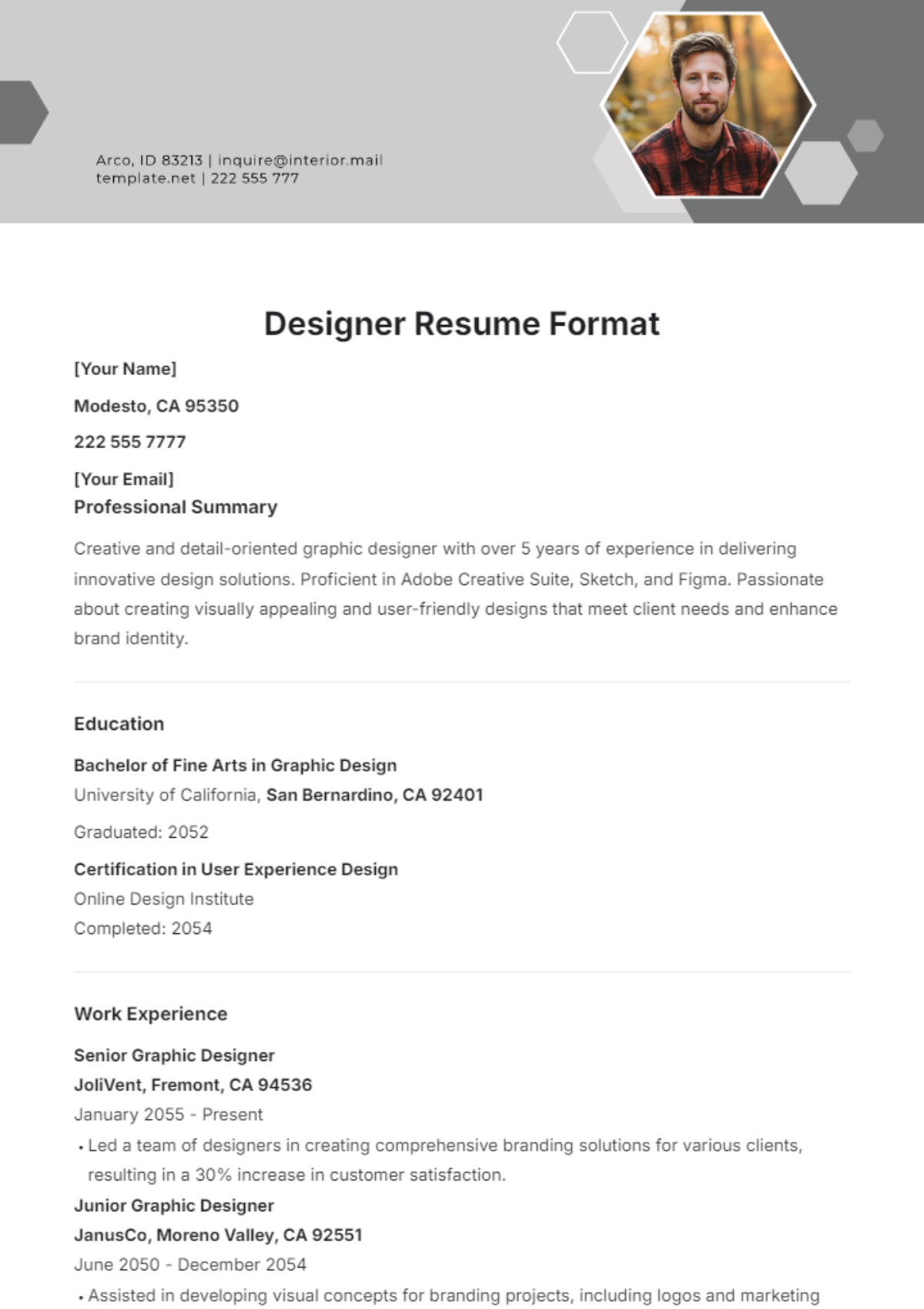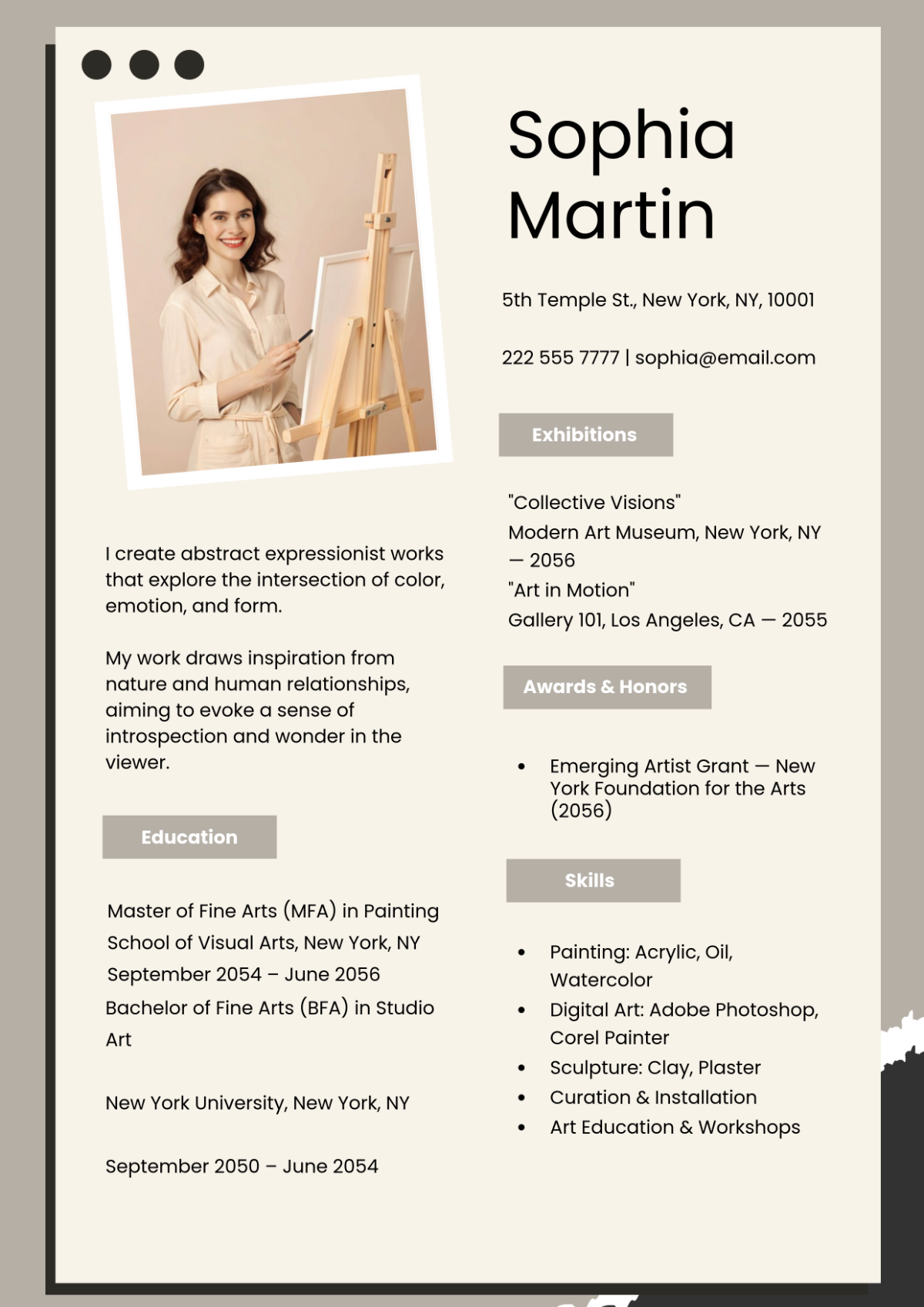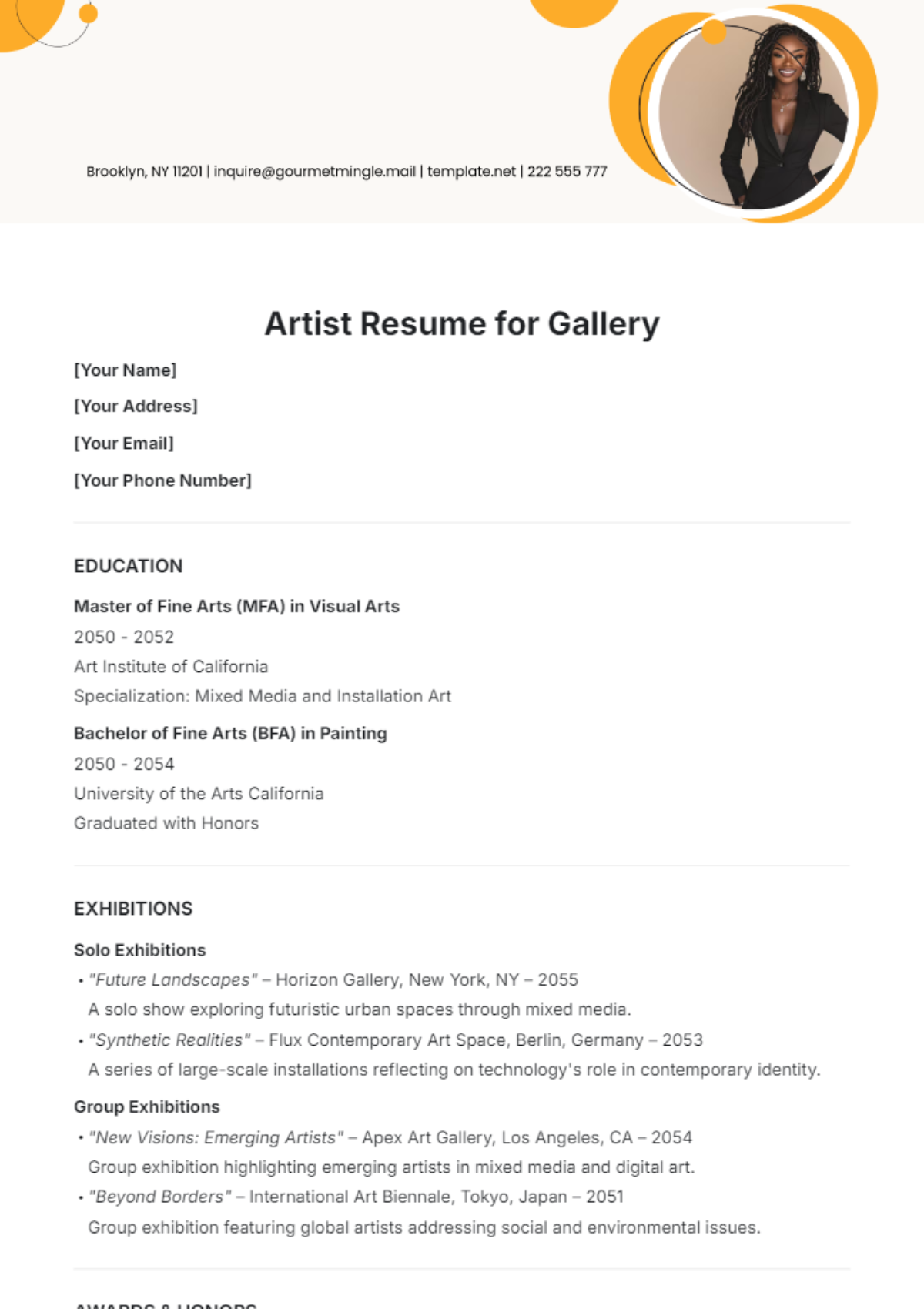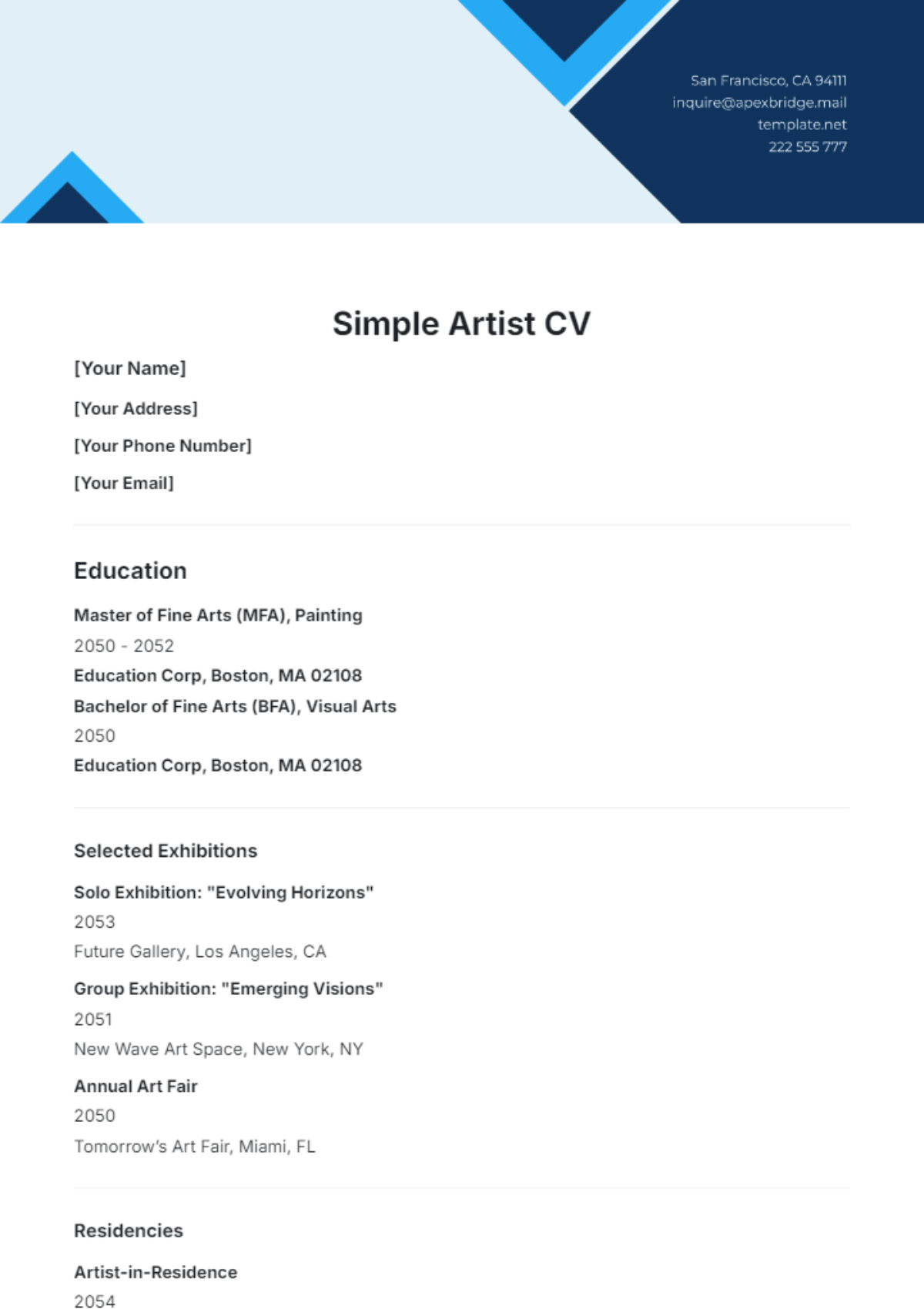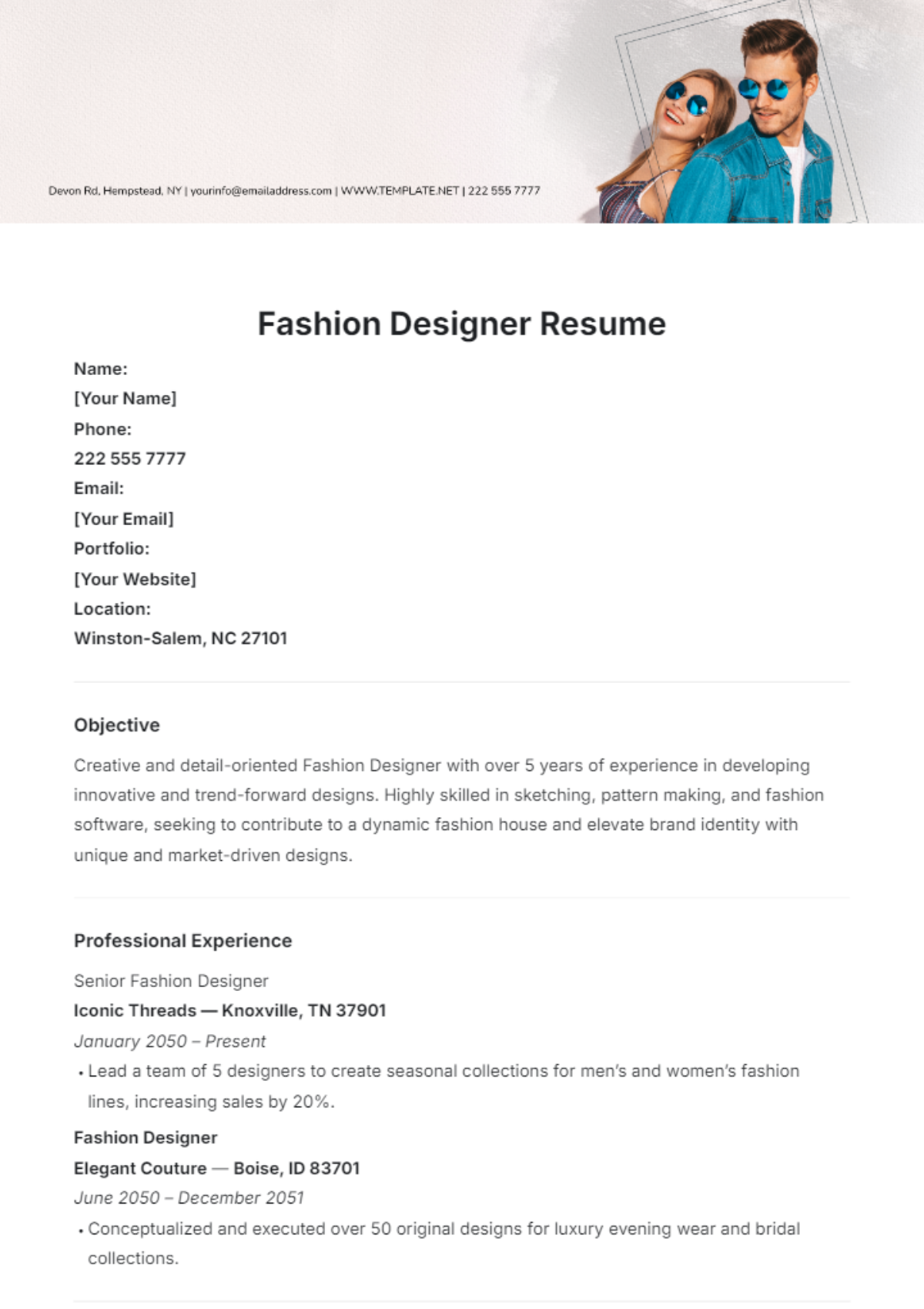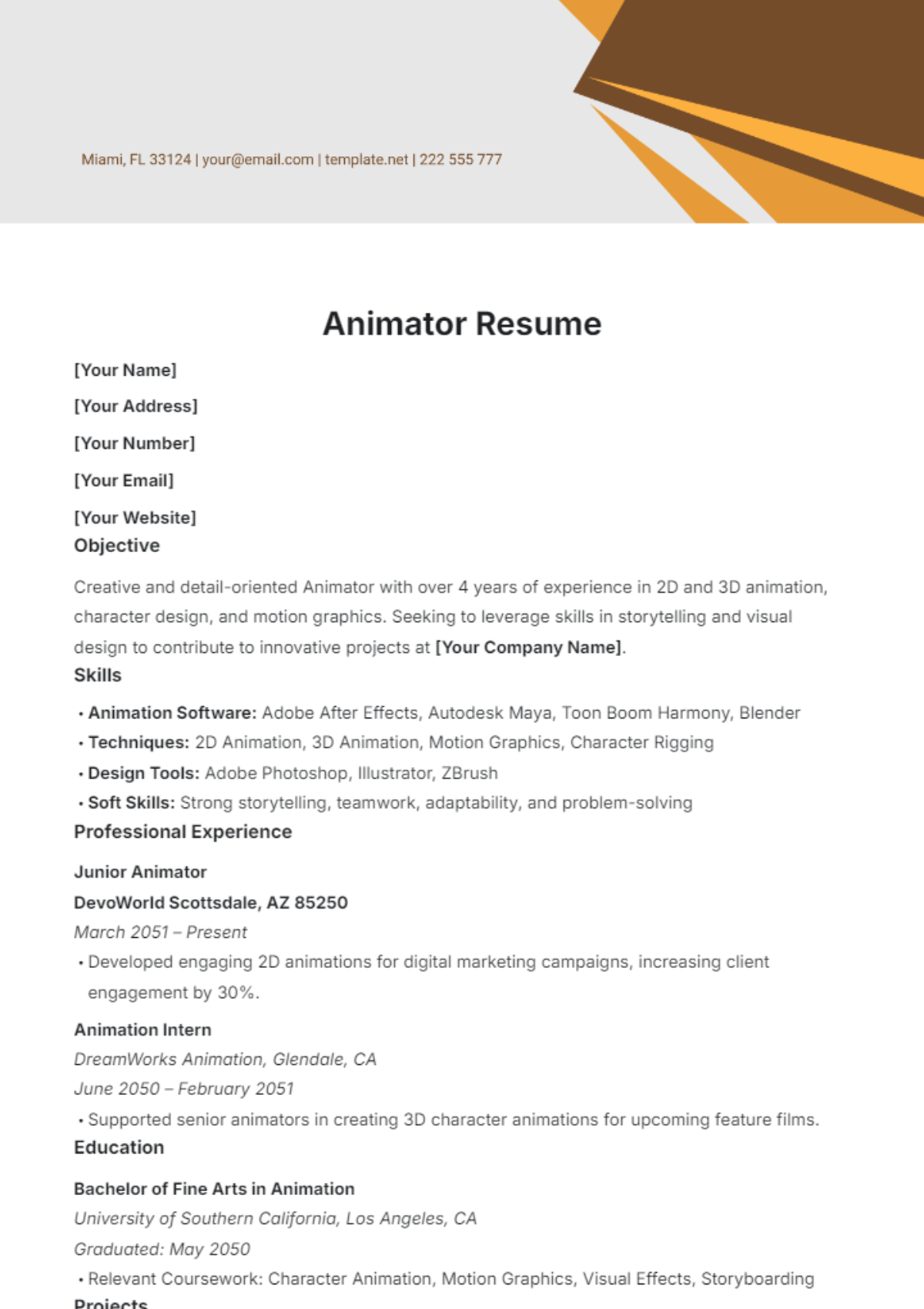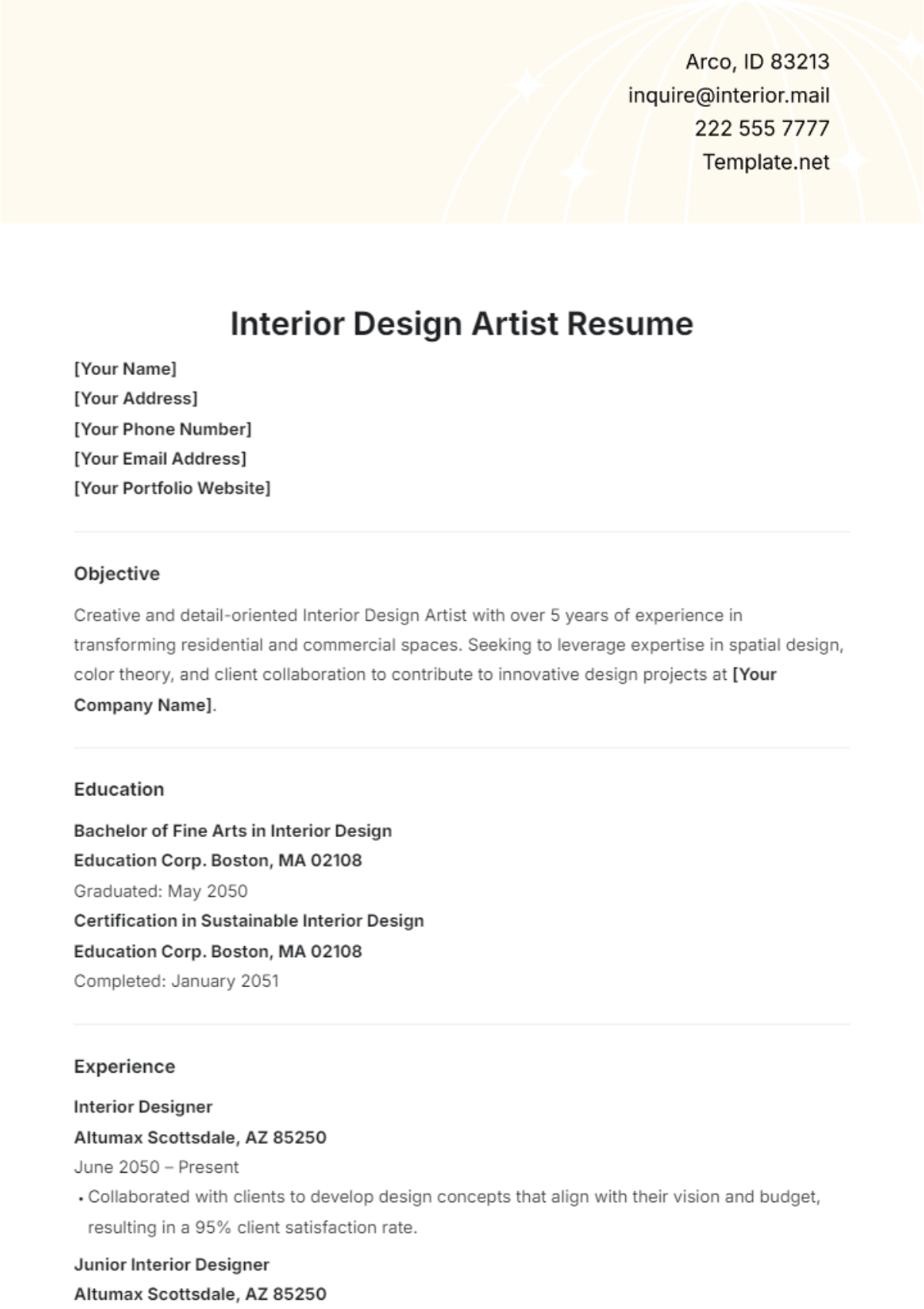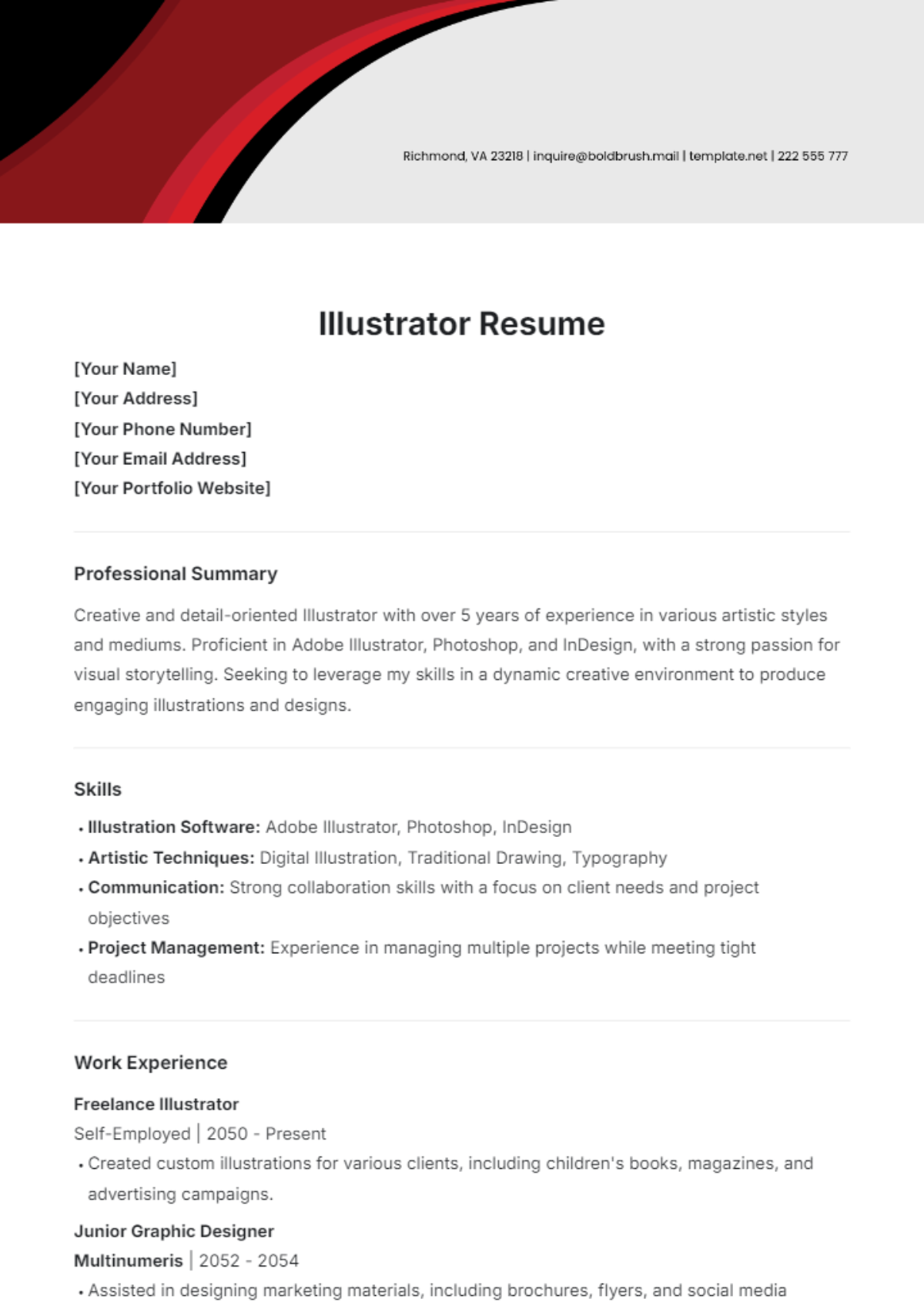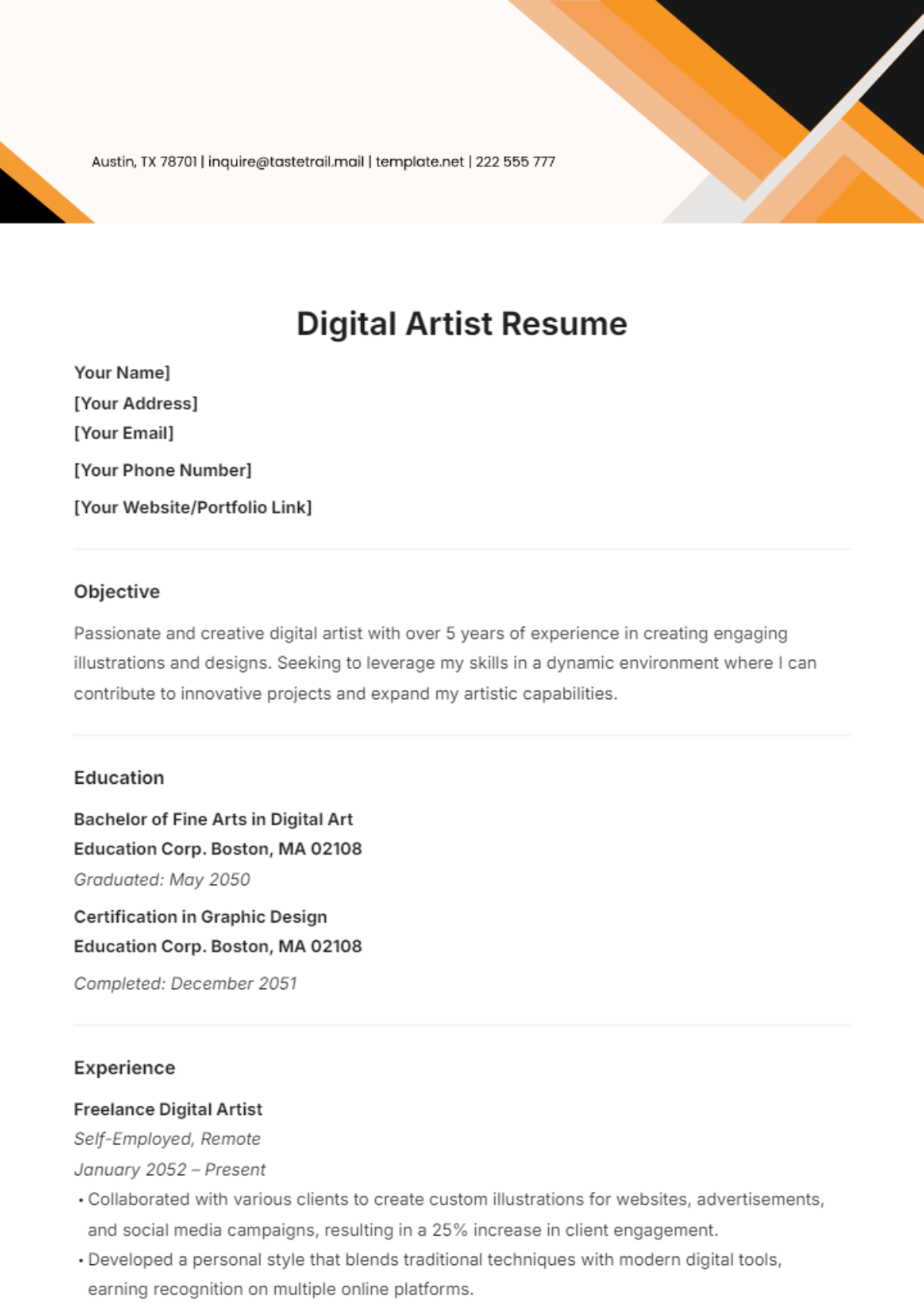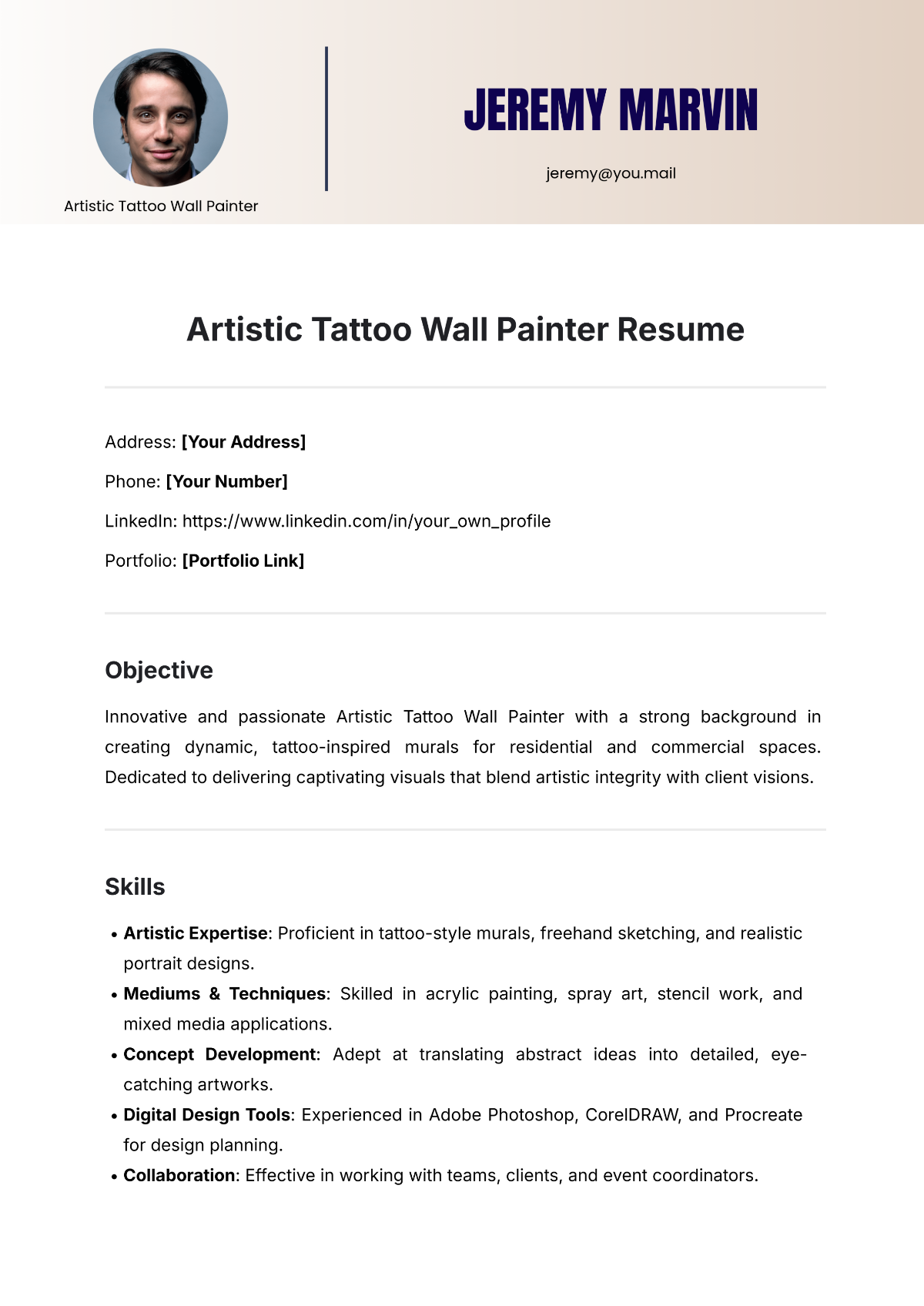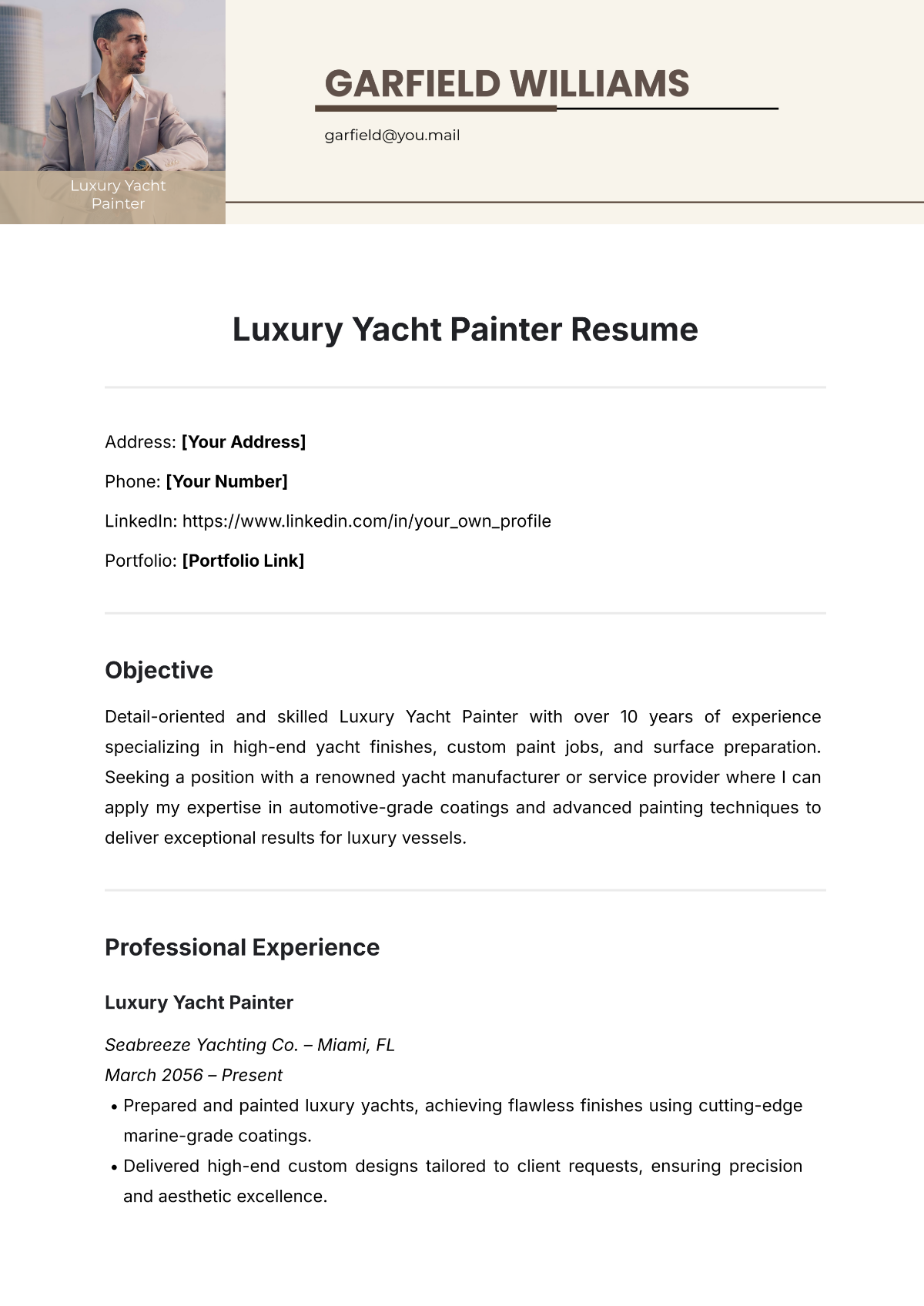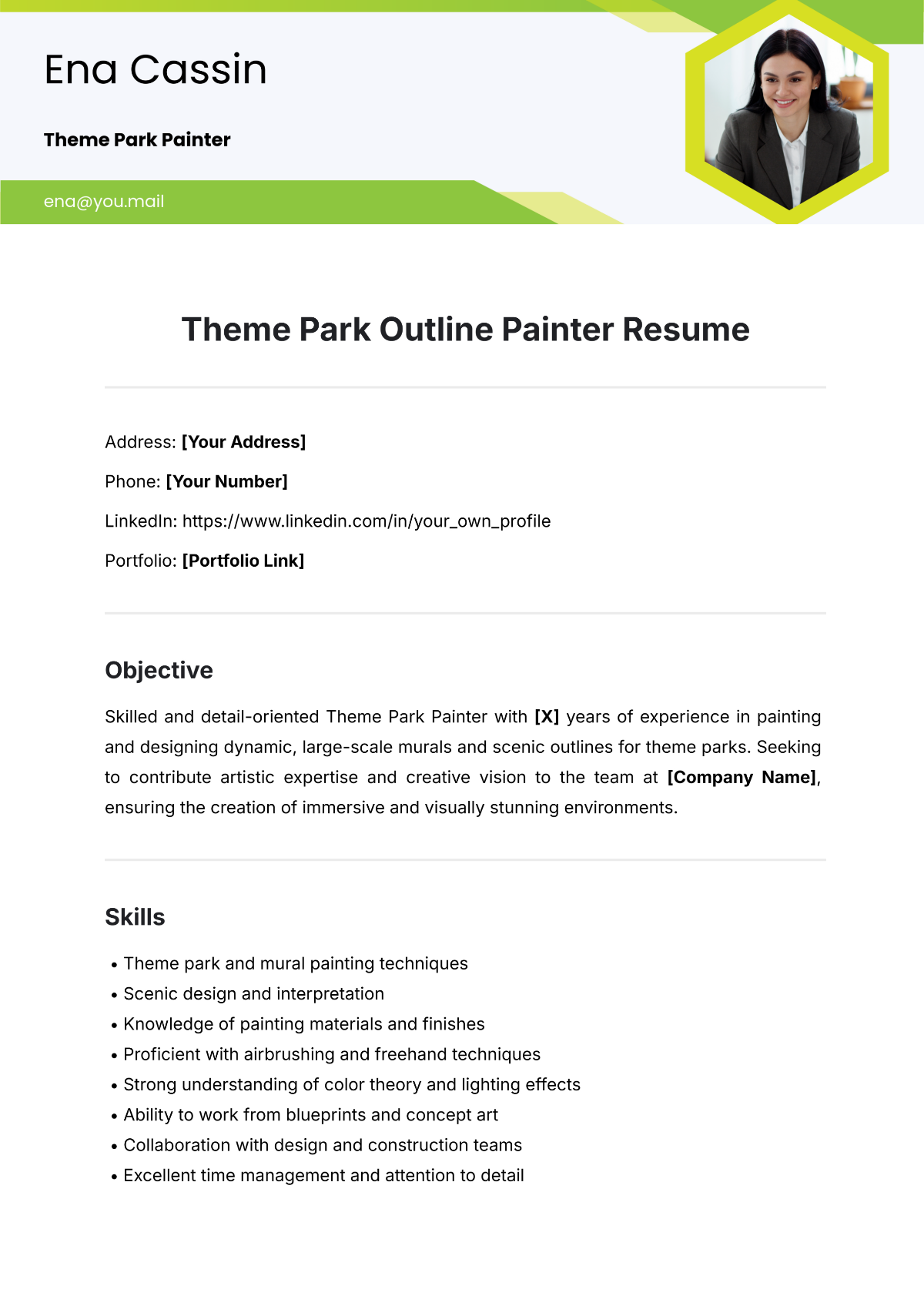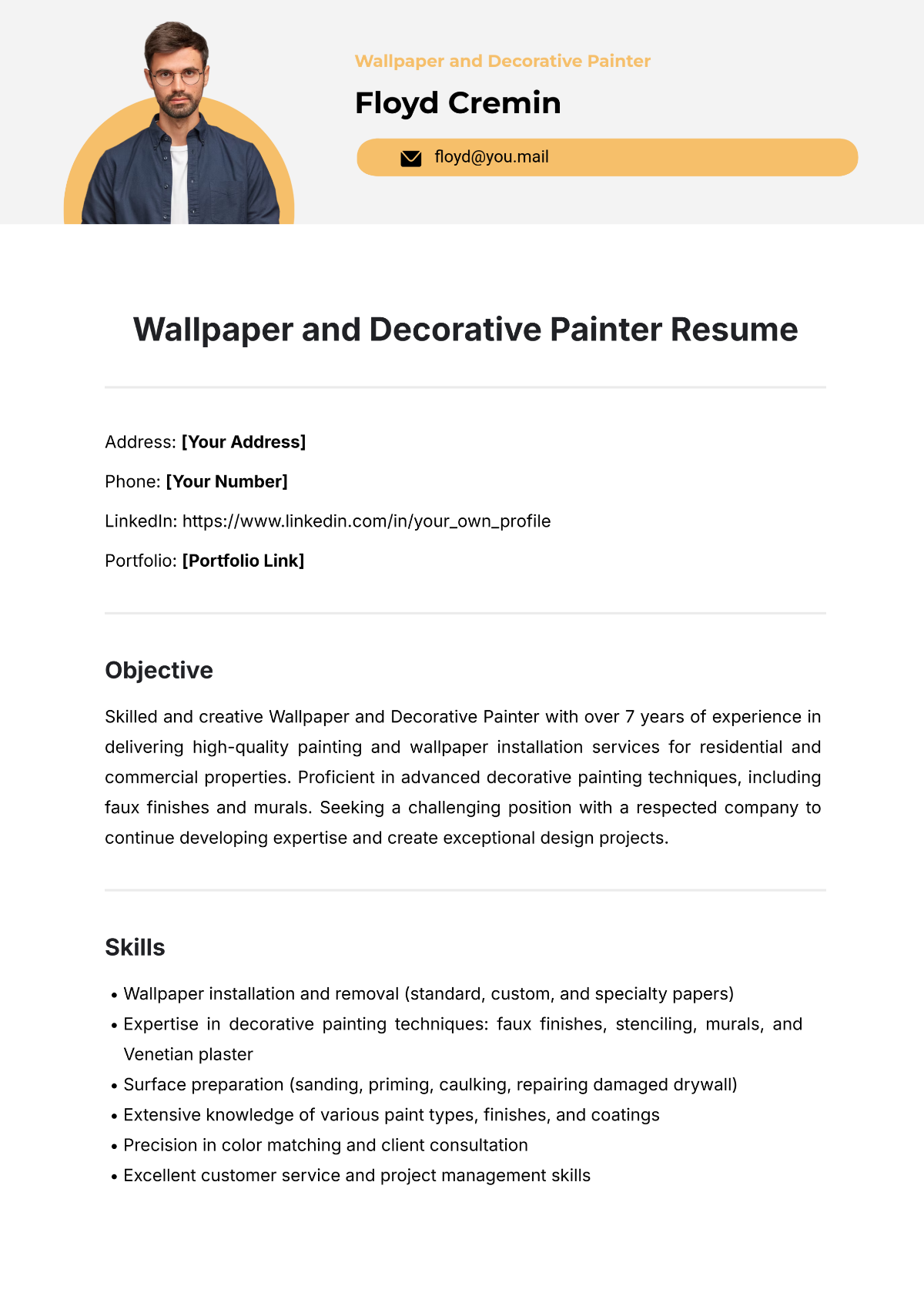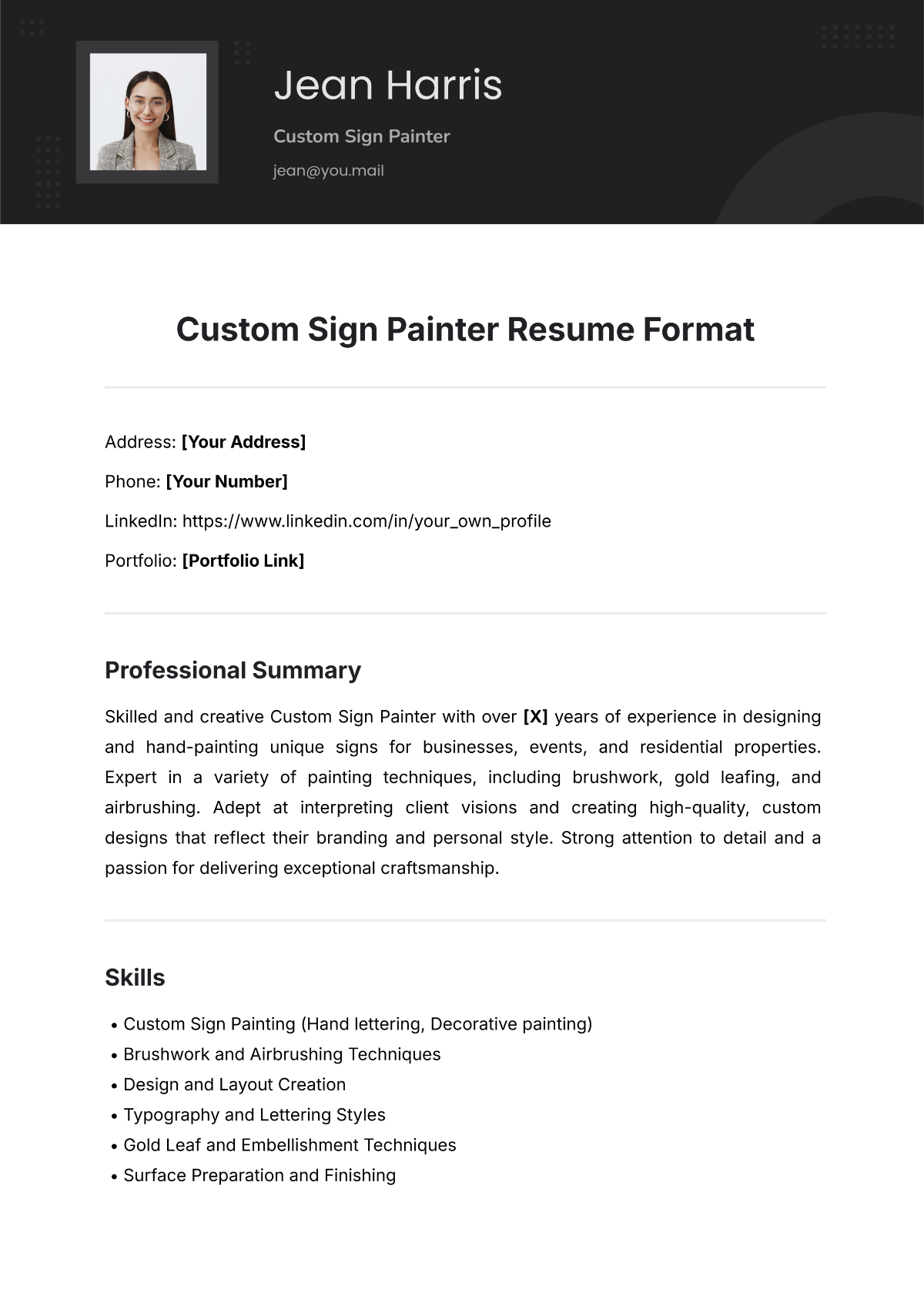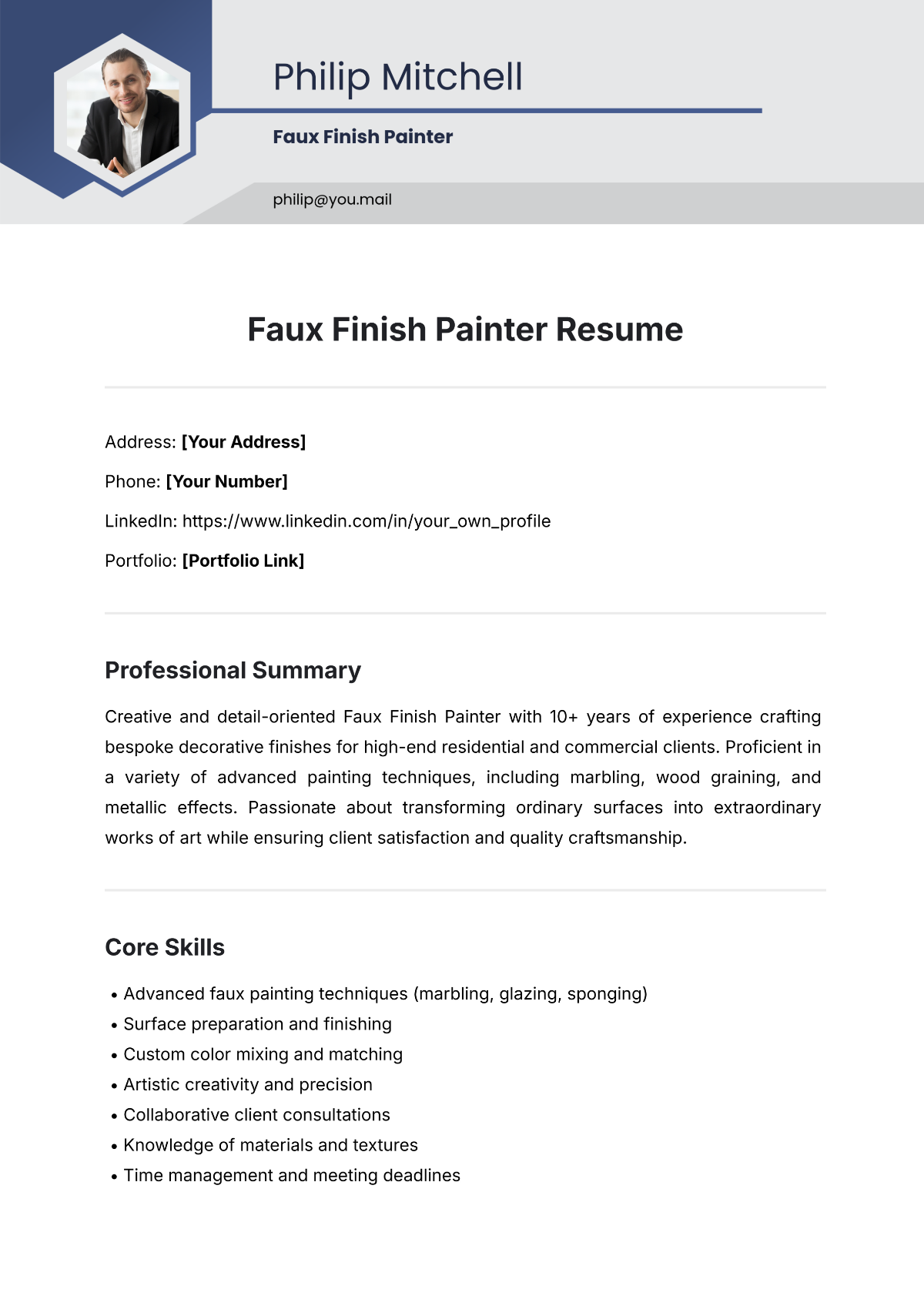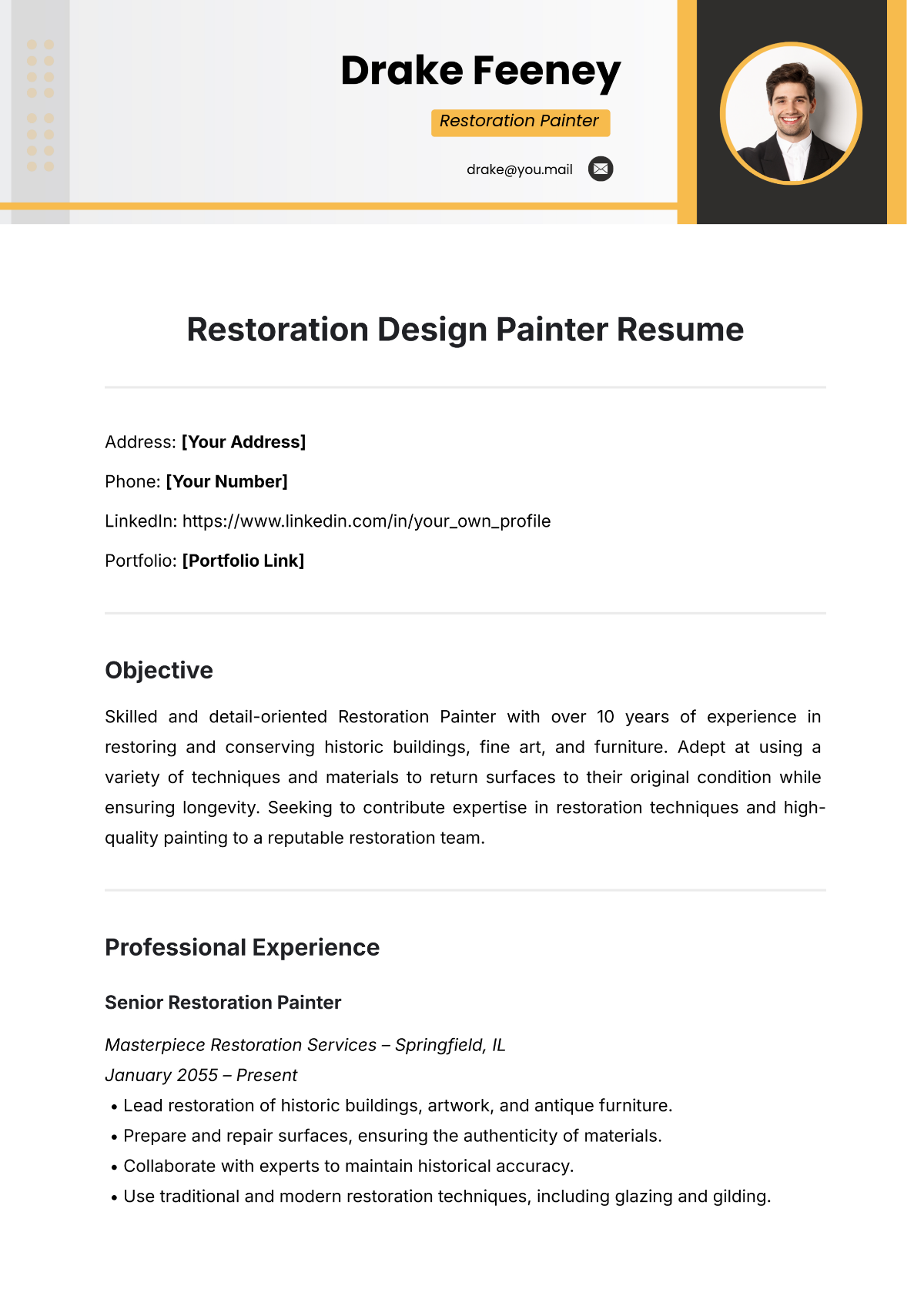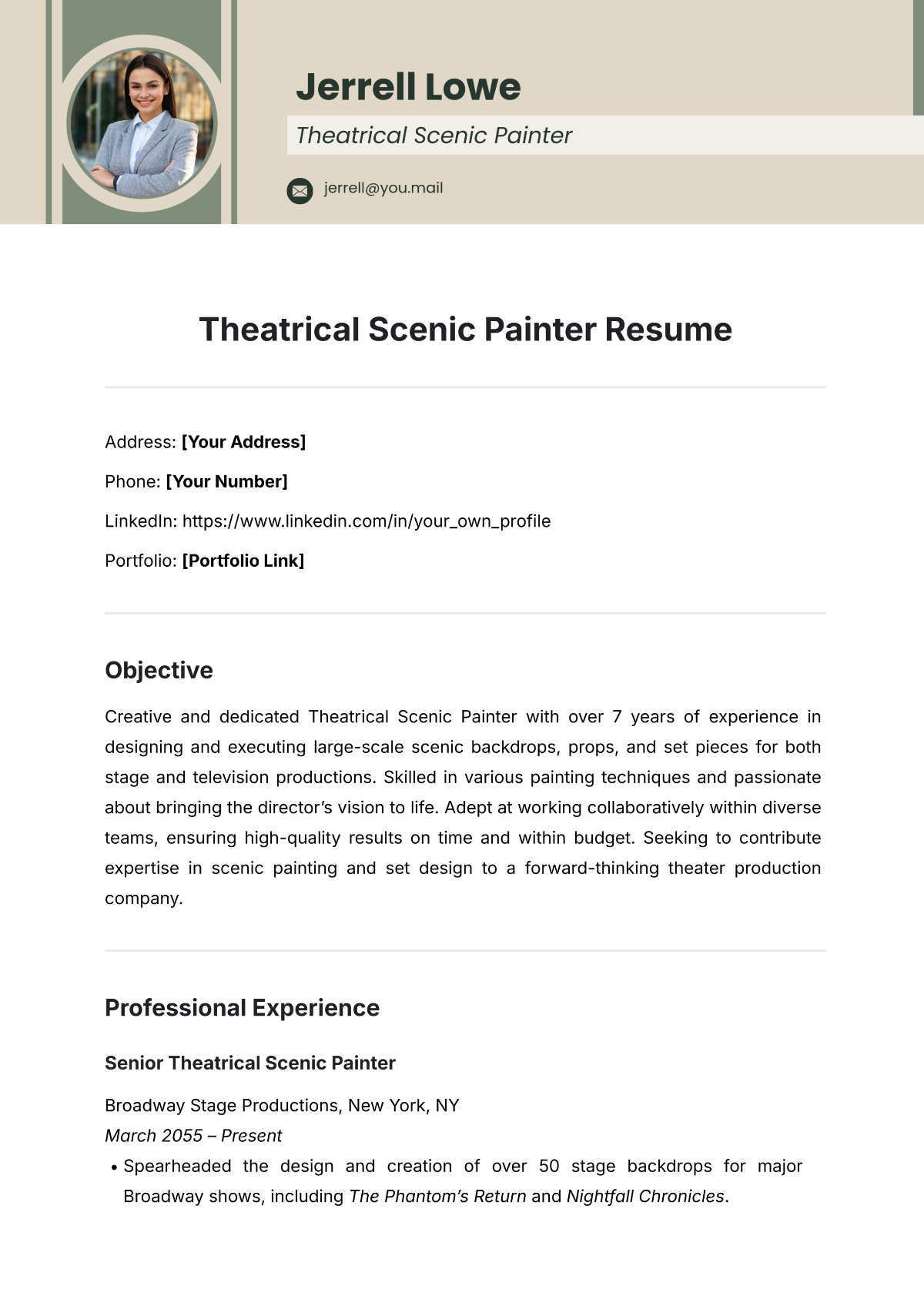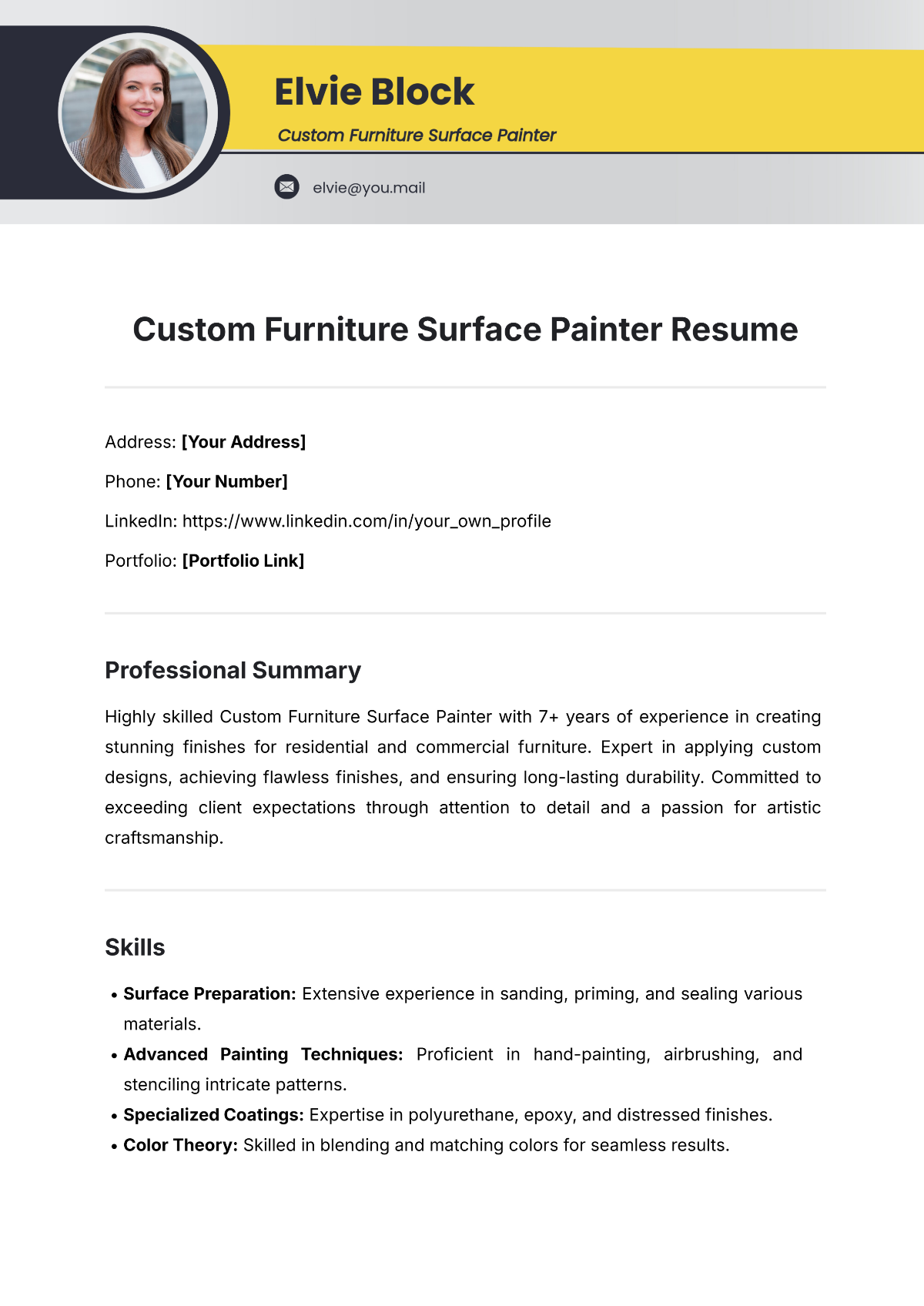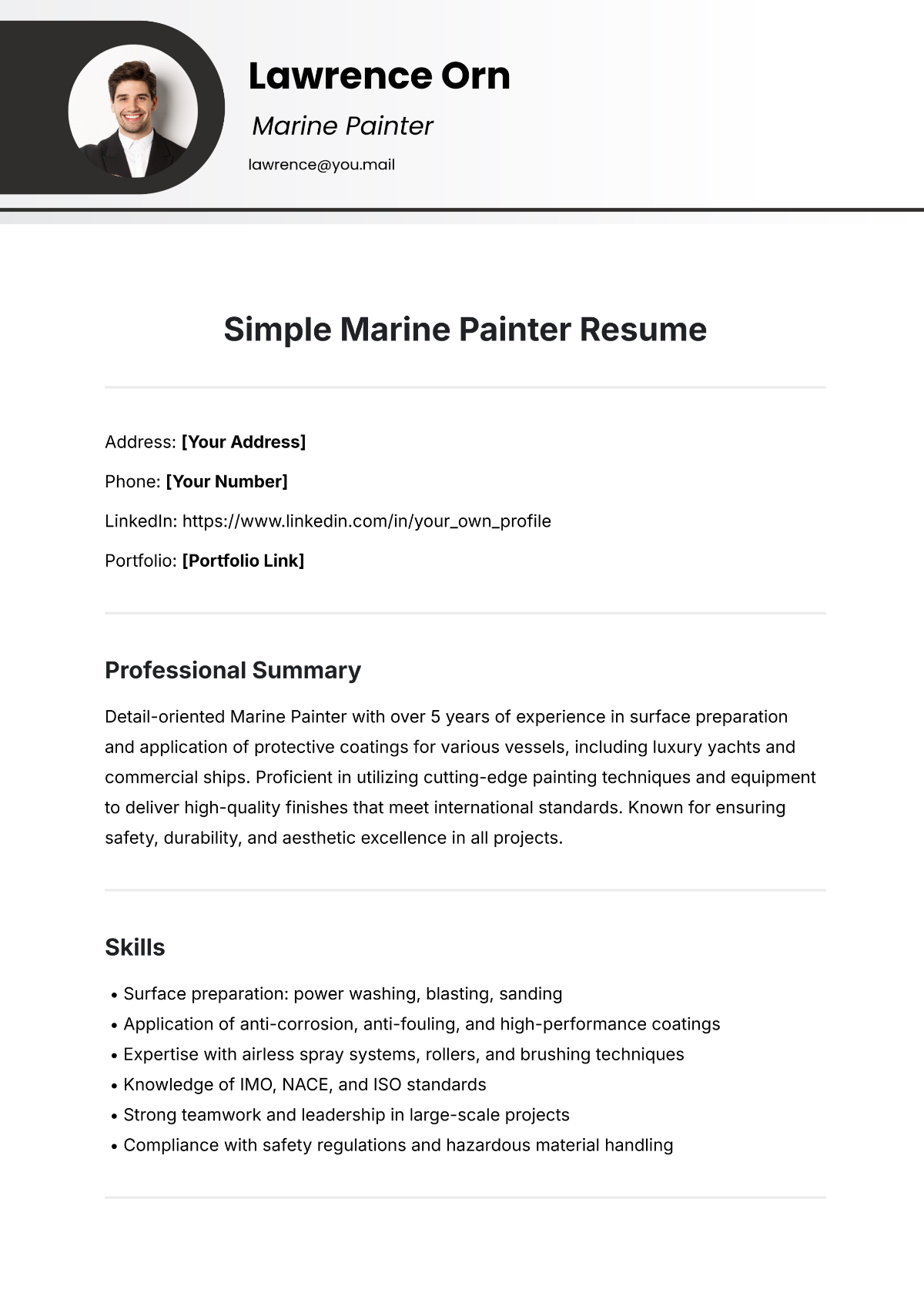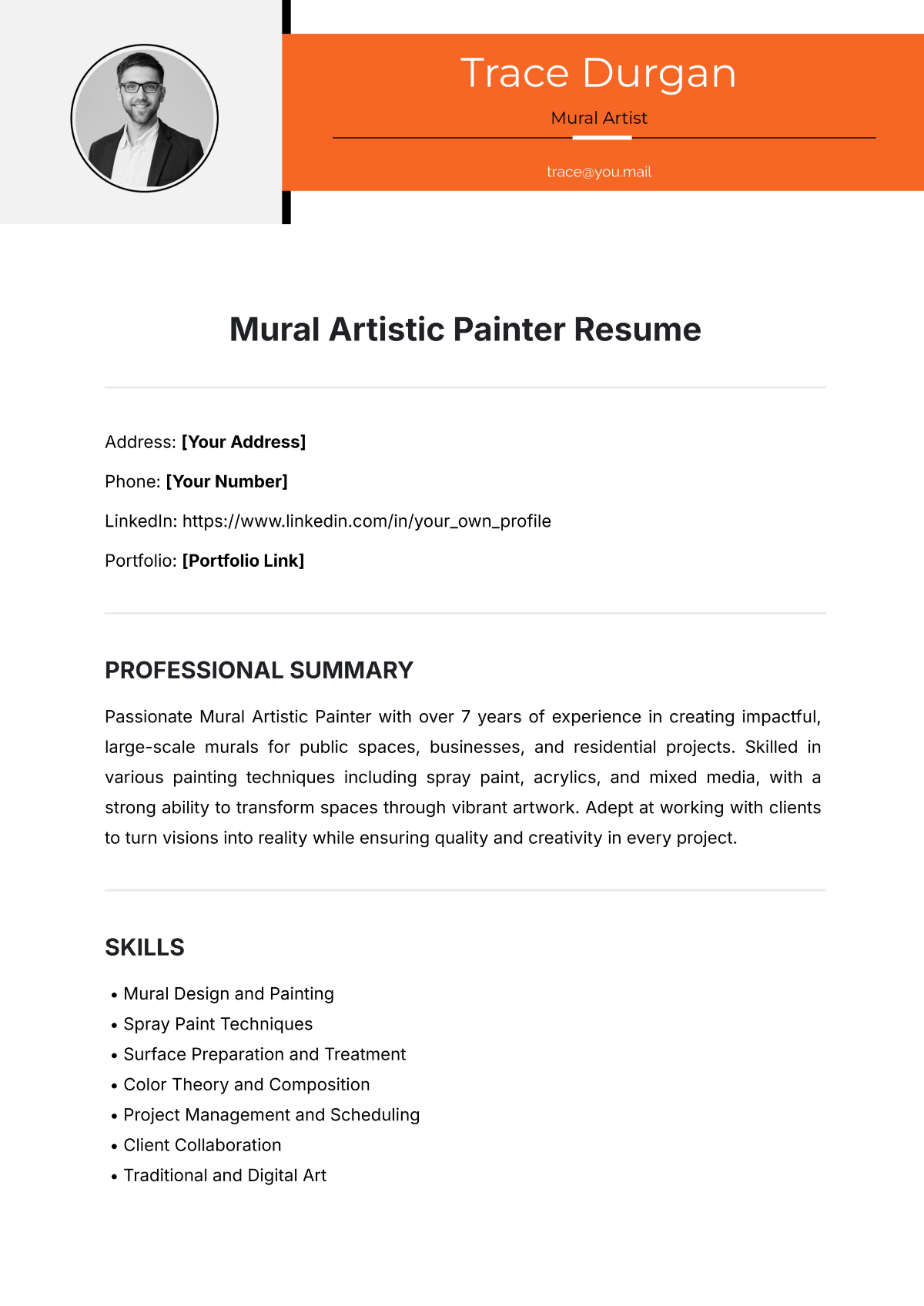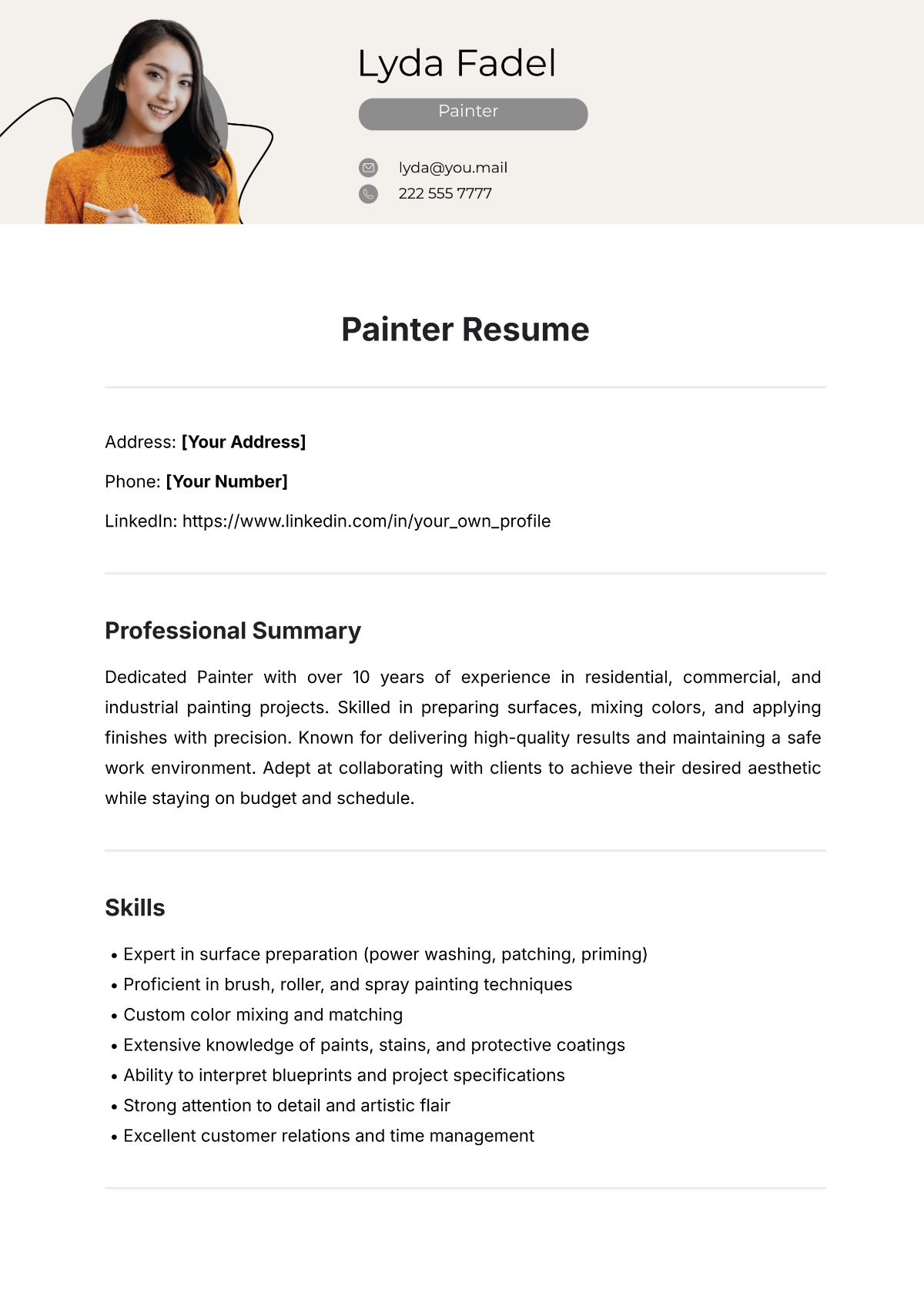Bring Your Creative Career to Life with Artist Resume Templates from Template.net
Keep your artistic journey on track with Artist Resume Templates from Template.net. Specifically tailored for artists, designers, and creatives looking to highlight their unique talents, our templates help you create a standout resume. With our user-friendly templates, you can showcase your portfolio or announce your next big gallery opening effortlessly. Featuring sections for exhibitions, awards, and collaborations, these templates ensure your credentials shine through. No design skills are required, and you can enjoy aesthetic, professional-grade designs that are ready for both print and digital use. From customizable layouts to the inclusion of contact information and social media links, making a striking first impression has never been easier or more cost-effective.
Discover the many artist resume templates we have on hand, tailored for various artistic disciplines and styles. Start by selecting a template that fits your vision and easily swap in your own images and personal details. Customize colors and fonts to match your brand for a cohesive look that still feels uniquely yours. Add flair with drag-and-drop icons and graphics, or incorporate animated effects to catch the eye of gallery directors and curators. With our AI-powered text tools, you can create compelling descriptions and artist statements without breaking a sweat. Possibilities are endless, and there is no need for advanced design skills—you can let your creativity shine through fuss-free. Plus, our library is regularly updated with fresh designs and new templates. Once your resume is flawless, download it or share it seamlessly via link, email, or print, making it ideal for multiple channels and opportunities to advance your artistic career.

